Chapter 17.80
SIGN REGULATIONS AND SIGN PERMITS
Sections:
17.80.010 What this chapter does.
17.80.030 Sign permit required.
17.80.080 Off-premises ladder signs.
17.80.090 Special events signs.
17.80.100 Yard sale temporary signage.
17.80.110 Community entrance signs.
17.80.140 Nonconforming signs.
17.80.010 What this chapter does.
This chapter regulates the design and placement of commercial and governmental identification/communication devices and structures that are built specifically to identify, inform and direct patrons to a particular merchant, store, establishment, development or service. These regulations apply to both on-premises and off-premises signs, but do not apply to handheld placards and other similar devices traditionally used for public protest and the exercise of free speech. This chapter does not regulate the content of free speech. [Ord. O-06-2010 § 2 (Exh. A); Ord. O-12-2009 § 2 (Exh. A); Ord. O-26-2008 § 2 (Exh. A § 16.1); Ord. O-18-2008 § 2 (Exh. A § 16.1); Ord. O-17-2006 § 2 (Exh. 1 § 16.1); Ord. O-23-2005 § 3 (Exh. 1(1) § 16.1)].
17.80.020 Purpose.
The purpose of this chapter is to regulate signs and to authorize the use of signs that are: compatible with their surroundings; legible under the circumstances in which they are seen; conducive to promoting traffic safety and the enjoyment of public travel by preventing visual distraction; protecting pedestrians; preserving and enhancing property values and establishing and enhancing high-quality office and commercial developments.
This chapter is also established to promote both short-term and long-term civic beauty and order by establishing standards and regulations for sign design, location, type, size, compatibility and aesthetics. It is intended that this chapter will assist the city in achieving its objective of having both functional and attractive streetscapes. [Ord. O-06-2010 § 2 (Exh. A); Ord. O-12-2009 § 2 (Exh. A); Ord. O-26-2008 § 2 (Exh. A § 16.2); Ord. O-18-2008 § 2 (Exh. A § 16.2); Ord. O-17-2006 § 2 (Exh. 1 § 16.2); Ord. O-23-2005 § 3 (Exh. 1(1) § 16.2)].
17.80.030 Sign permit required.
Every person or entity that proposes to or who installs, erects or constructs new permanent signs, or makes alterations, adjustments, reconstruction or other changes to existing signs, shall first obtain a permit, unless otherwise exempted by this chapter. [Ord. O-06-2010 § 2 (Exh. A); Ord. O-12-2009 § 2 (Exh. A); Ord. O-26-2008 § 2 (Exh. A § 16.3); Ord. O-18-2008 § 2 (Exh. A § 16.3); Ord. O-17-2006 § 2 (Exh. 1 § 16.3); Ord. O-23-2005 § 3 (Exh. 1(1) § 16.3)].
17.80.040 Application.
Only property owners, sign lessors or their duly authorized agents shall make application for a sign permit on forms prepared by the planning department. No sign permit application shall be processed without the submission of the application and all supporting materials as required by this chapter, including the processing fee. Incomplete applications shall not be processed under any circumstance.
A. Supporting Materials. The sign permit application shall be submitted with the materials listed in this section. The planning director may determine and require that additional items not listed herein be submitted in order to evaluate the proposed sign permit application. The number of hard copies and electronic copies, as well as the appropriate format of each, will be determined by the planning director.
1. Site Plans. A site plan drawn to scale, showing the proposed location of the sign, parking areas, landscaped areas and buildings. If the proposed sign will be located within 100 feet of a property line, the parking areas, landscaped areas and buildings shall be shown for the property within 100 feet of the proposed sign.
2. Colored Graphics. Colored graphics showing the proposed sign copy, type of sign, and dimensions.
3. Fee. The processing fee required for a sign permit of $50.00 per sign face, as required by the current consolidated fee schedule approved by the city council. [Ord. O-02-2016 § 2 (Exh. A); Ord. O-06-2010 § 2 (Exh. A); Ord. O-12-2009 § 2 (Exh. A); Ord. O-26-2008 § 2 (Exh. A § 16.4); Ord. O-18-2008 § 2 (Exh. A § 16.4); Ord. O-17-2006 § 2 (Exh. 1 § 16.4); Ord. O-23-2005 § 3 (Exh. 1(1) § 16.4)].
17.80.050 Approval process.
Sign permits for permitted signs may be approved by either the planning director or designee.
A. Planning Director or Designee Approval. The planning director or designee shall have the authority to review and approve sign permits that are in compliance with EMMC 17.80.060 and 17.80.070. In carrying out this responsibility, the planning director may also require signage applications to be reviewed by the planning commission in cases where signage is proposed that requires interpretation of these provisions or is otherwise unusual. This is not to be interpreted to mean that signage that violates this chapter or specific provisions may be reviewed, interpreted and/or approved by the planning commission. As part of the planning director’s or designee’s review, inspections may be required by the planning and building departments. The planning director or designee may approve, approve with conditions, or deny the application based upon findings of fact. [Ord. O-06-2010 § 2 (Exh. A); Ord. O-12-2009 § 2 (Exh. A); Ord. O-26-2008 § 2 (Exh. A § 16.5); Ord. O-18-2008 § 2 (Exh. A § 16.5); Ord. O-17-2006 § 2 (Exh. 1 § 16.5); Ord. O-23-2005 § 3 (Exh. 1(1) § 16.5)].
17.80.060 General provisions.
The following general provisions and requirements shall apply to all signs and outdoor advertising structures that may be erected or maintained within Eagle Mountain City. The planning director shall approve signs that are in compliance with the regulations and standards contained herein. Signs shall be maintained in accordance with these provisions and standards.
A. Signs Installed in Compliance with Codes. Signs shall be installed according to requirements contained in the International Building and Electrical Codes, as applicable.
B. Traffic Hazards. No sign shall be erected where it may create a traffic safety hazard by: obscuring traffic control signs or signals; confusing drivers by appearing to be a traffic control sign or signal; or obstructing vision at intersections or driveways by being placed within a clear vision triangle. Signs shall not be fastened to traffic control devices, street signs, or utility poles.
C. Signs in Right-of-Way. Unless authorized by specific written agreement with the city, no sign shall be placed in or extend over any public right-of-way except traffic control signs, signs described in this chapter, city events or notices (Pony Express Days, recreation leagues, etc.), and public notices placed by public agencies.
D. Sign Illumination. All temporary signs must be nonilluminated. Allowed permanent signs may be nonilluminated, or illuminated by a constant, indirect source of illumination focused on the sign’s copy or be internally illuminated, halo illuminated, or externally indirectly illuminated, unless otherwise specified. All illuminated signs shall comply with the time limitations of EMMC 17.56.050(G). No animated, flashing, blinking, or moving signs shall be permitted, except that animated public service message signs displaying the time of day, temperature, and/or announcements of community events may be permitted by the planning commission. No sign illumination is permitted within the residential zone of the city unless approved by the planning director, or approved as part of a conditional use permit or master development plan. Electrical signs and spotlights or other fixtures used for the indirect illumination of signs shall be installed only in compliance with the city’s adopted International Electrical Code, International Building Code and Chapter 17.56 EMMC, Outdoor Lighting Standards.
1. Type of Sign Illumination. The type of sign illumination as otherwise set forth in this chapter:
a. Halo-Type Illumination. The light source is concealed behind an opaque face and the rays of illumination are projected outwards toward the edge of the sign, forming a “halo” effect around the exterior of the sign.
b. Internal Illumination. The light source is concealed entirely within a sign which makes sign graphics visible by transmitting light through a translucent or semitranslucent material.
c. External, Indirect Illumination. The light source is exposed and directed toward the sign face but is shielded or concealed from view with proper shields or glass lenses to avoid glare. Examples of external illumination include gooseneck light fixtures and ground-mounted light fixtures.
2. Externally Illuminated Sign Standards.
a. External illumination for signs shall comply with all provisions of this chapter, and is included within the total outdoor light output limits of EMMC 17.56.050(D), and shall comply with applicable lamp source and shielding restrictions.
b. Except as provided in subsection C of this section, externally illuminated signs shall be illuminated only with steady, stationary, fully shielded light sources directed solely onto the sign without causing glare.
c. A light fixture mounted above the sign face may be installed with its bottom opening tilted toward the sign face, provided:
i. The bottom opening of the light fixture is flat (i.e., it could be covered by a flat board allowing no light to escape); and
ii. The uppermost portion of the fixture’s opening is located no higher than the top of the sign face (Figure 17.80.060-1). Light fixtures aimed and installed in this fashion shall be considered fully shielded for purposes of calculating the total outdoor light output limits of EMMC 17.56.050(D).
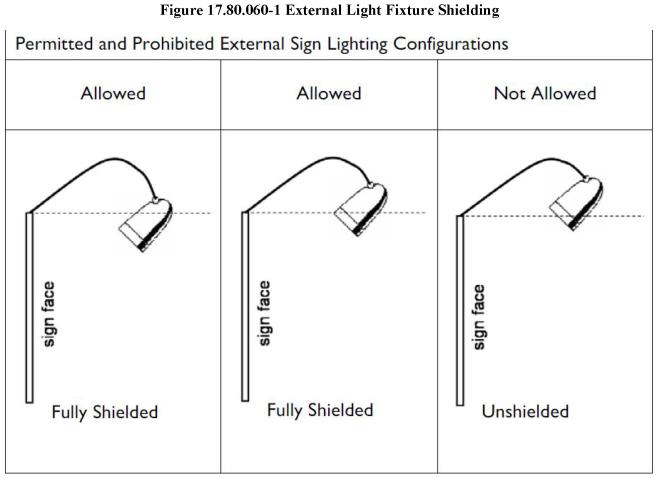
3. Internally Illuminated Sign Standards. Internally illuminated signs shall either be constructed with an opaque background and translucent text and symbols, or with a colored (not white, off-white, light gray, or cream) background and generally lighter text and symbols (Figure 17.80.060-2). Lamps used for internal illumination of internally illuminated signs shall not be counted toward the total outdoor light output limits of EMMC 17.56.050(D).
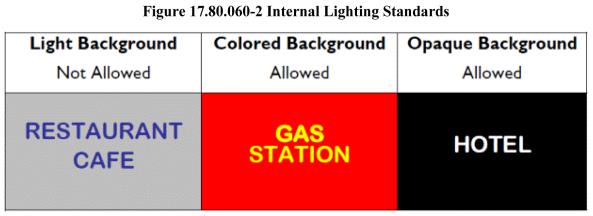
a. Other internally illuminated panels or decorations not considered to be signage according to this chapter (such as illuminated canopy margins, building faces, or architectural outlining) shall be subject to the standards applicable for such lighting, including but not limited to the lamp source, shielding standards, and total outdoor light output limits established in EMMC 17.56.050(D).
4. Neon Sign Standards. Neon sign lighting shall be included within the total outdoor light output limits of EMMC 17.56.050(D).
5. Single-Color LED Sign Standards. Single-color LED signs shall come equipped with dimming technology that automatically adjusts the display’s brightness based on ambient light conditions and comply with maximum nighttime brightness.
a. Single-color LED signs shall not exceed a maximum illumination of 200 nits during nighttime hours (between dawn and dusk) and a maximum illumination of 5,000 nits during daylight hours.
6. Time Limitations. All signs shall be turned off by 11:00 p.m. or when the business closes, whichever is later. Signs subject to time limitations are required to have functioning and properly adjusted automatic shut-off timers.
E. Compatibility. The design of signs, including materials and form, shall be compatible with the building or use to which they are an accessory.
F. Maintenance of Signs. Signs and their supporting structures shall be maintained so as not to create a health or safety hazard, or constitute a nuisance. Signs and their supporting structures shall also be maintained in good repair and operation and shall be repaired, repainted, relettered or otherwise maintained in good visual condition so as to not be an aesthetic detriment to the immediate and surrounding areas.
G. Abandoned Signs. Any sign that is not structurally sound or no longer serves to inform or attract the public, including illegible signs and signs advertising or identifying abandoned uses, shall be considered abandoned and shall be removed as required by this chapter. [Ord. O-12-2014 (Exh. A); Ord. O-06-2010 § 2 (Exh. A); Ord. O-12-2009 § 2 (Exh. A); Ord. O-26-2008 § 2 (Exh. A § 16.6); Ord. O-18-2008 § 2 (Exh. A § 16.6); Ord. O-17-2006 § 2 (Exh. 1 § 16.6); Ord. O-23-2005 § 3 (Exh. 1(1) § 16.6)].
17.80.070 Permitted signs.
The following permanent signs shall be permitted in accordance with regulations and standards for this section. Any sign not expressly allowed by this chapter is prohibited. The planning director shall approve signs that are in compliance with requirements of EMMC 17.80.060, General provisions, and the regulations and standards contained herein.
A. Monument Signs in Agricultural and Residential Zones. Monument signs are allowed in all zones. Monument signs in the agricultural and residential zones may only be used in conjunction with a residential development, agricultural business, church, school or an institutional or recreational facility that has received approval from the city. These monument signs shall conform to the following standards:
1. Height. The maximum height shall be eight feet.
2. Sign Copy. The maximum sign copy shall be 64 square feet.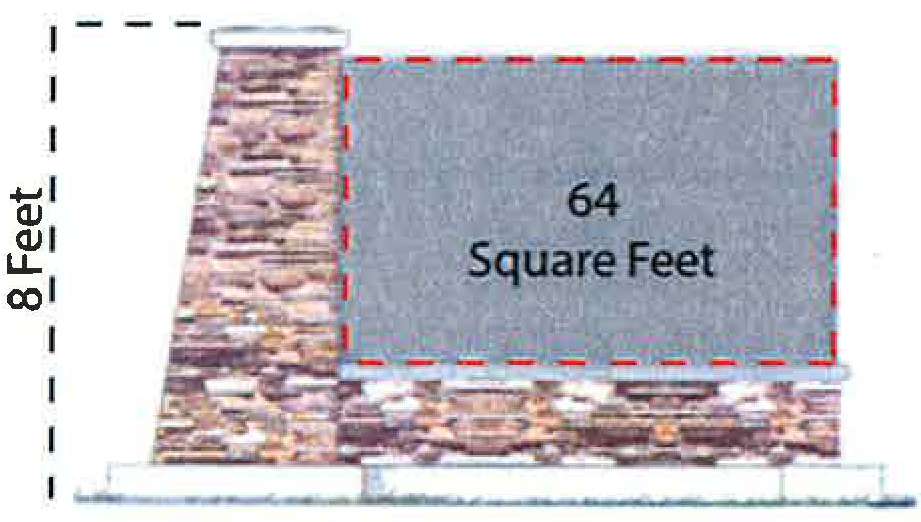
3. Setback. The setback shall be five feet from any property line.
4. Orientation. Monument signs shall be located perpendicular to the adjacent public street or public view if double-sided or, if single-sided, shall be parallel to the adjacent public street or public view.
5. Landscaping. All areas surrounding monument signs shall be landscaped with irrigated landscaping.
6. Compatibility. Monument signs shall be designed with colors and architecture that are compatible with the buildings that they identify. Supports shall have architectural coverings and design that complement the overall design scheme.
7. Illumination. Monument signs may be internally or externally lit and shall only illuminate the sign face or copy.
B. Combined Monument Signs in the Commercial and Industrial Zones. Developments that have multiple pads and are located in a commercial or industrial zone may be allowed to construct up to two combined monument sign structures per street frontage. The requirement to construct the monument sign structures may be a condition of approval for a site plan or conditional use. The developer shall ensure that the sign structure allows for as many building pads to be included as is reasonably possible. It is not a guaranteed right that all businesses will have sign space on the combined monument sign. The sign copy will be approved by the planning director or designee through the sign permit application process. All combined monument signs shall be designed and built in substantial conformance to the sign depicted in Figure 17.80.070(A) and must comply with the standards enumerated in subsections (A)(4) through (A)(7) of this section and the standards contained in this subsection. Minor variations to the sign design may be considered by the planning director. More significant variations require approval by the planning commission and city council; height and size requirements may not be exceeded.
Figure 17.80.070(A)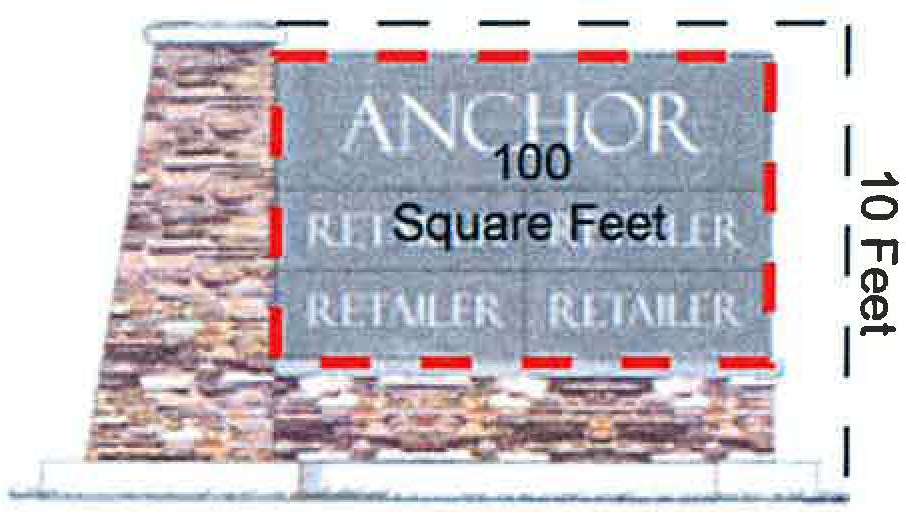
1. Height. The maximum height of a combined monument sign shall be 10 feet.
2. Sign Copy. The maximum sign copy of a combined monument sign shall be 100 square feet.
3. Materials. Each sign shall contain stone, rock, or brick at the base (at least two feet high) and vertically along at least one side (at least two feet wide). The sign copy may not exceed the height of the rock column, and may not extend beyond the rock base.
4. Design. Additional design elements may be considered by the planning director in order to give uniqueness to a development.
5. Setback. There is no required setback for combined monument signs. These signs must follow the clear vision triangle standards, and may not cause a traffic/visibility concern. The specific sign location must be approved by the planning director or designee.
C. Individual Monument Signs in the Commercial and Industrial Zones. Developments that have multiple pads and are located in a commercial or industrial zone shall be allowed to construct one individual monument sign for each freestanding building. In an effort to maintain aesthetic consistency, all individual monument signs within a project/development shall be substantially similar in design and materials. All monument signs must comply with the standards enumerated in subsections (A)(4) through (A)(7) and (C)(1) through (C)(6) of this section. Minor variations to the sign designs within a development may be considered by the planning director. More significant variations require approval by the planning commission and city council. If multiple businesses share a common structure, then a combined monument sign containing signage for each business is required. No individual monument sign is allowed for businesses that share a structure.
Figure 17.80.070(B)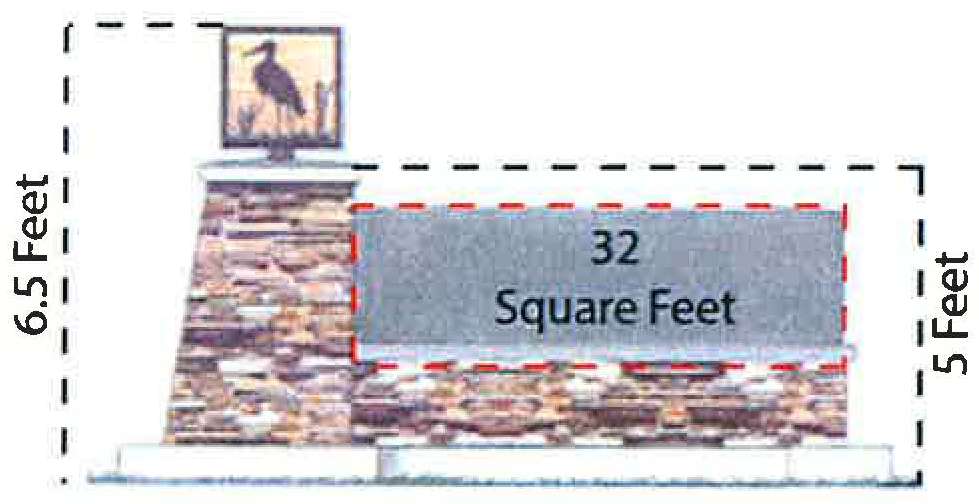
Preferred example of an individual monument sign
1. Height. The maximum height shall be six feet. Additional design elements, such as those depicted in Figure 17.80.070(B), may be no higher than eight feet.
2. Sign Copy. The maximum sign copy of any monument sign shall be 32 square feet.
3. Materials. Each sign shall, at a minimum, contain stone, rock, or brick at the base (at least two feet high). The recommended monument sign design is depicted in Figure 17.80.070(B). The materials and design shall be consistent for each sign in the development/project.
4. Design. Each development should contain an element of uniqueness, but the signage throughout a development must be consistent.
5. Setback. There is no required setback for individual monument signs. These signs must follow the clear vision triangle standards, and may not cause a traffic/visibility concern. The specific sign location must be approved by the planning director or designee.
6. Proximity to Other Such Signs. Signs must be separated by at least 100 feet as measured diagonally across the property from center to center of both signs and shall be no closer than 100 feet to any other monument sign located on the same frontage.
D. Wall, Canopy, or Awning Signs. Wall, canopy, or awning signs are allowed in commercial and industrial zones, as well as in approved mixed-use projects for commercial, industrial and airport uses. Wall signs shall not take up more than 10 percent of any wall area on which the sign is located. Canopy or awning signs shall not be included in the calculation of the wall sign area, although the sign copy for canopy signs shall not exceed 50 percent of the canopy area.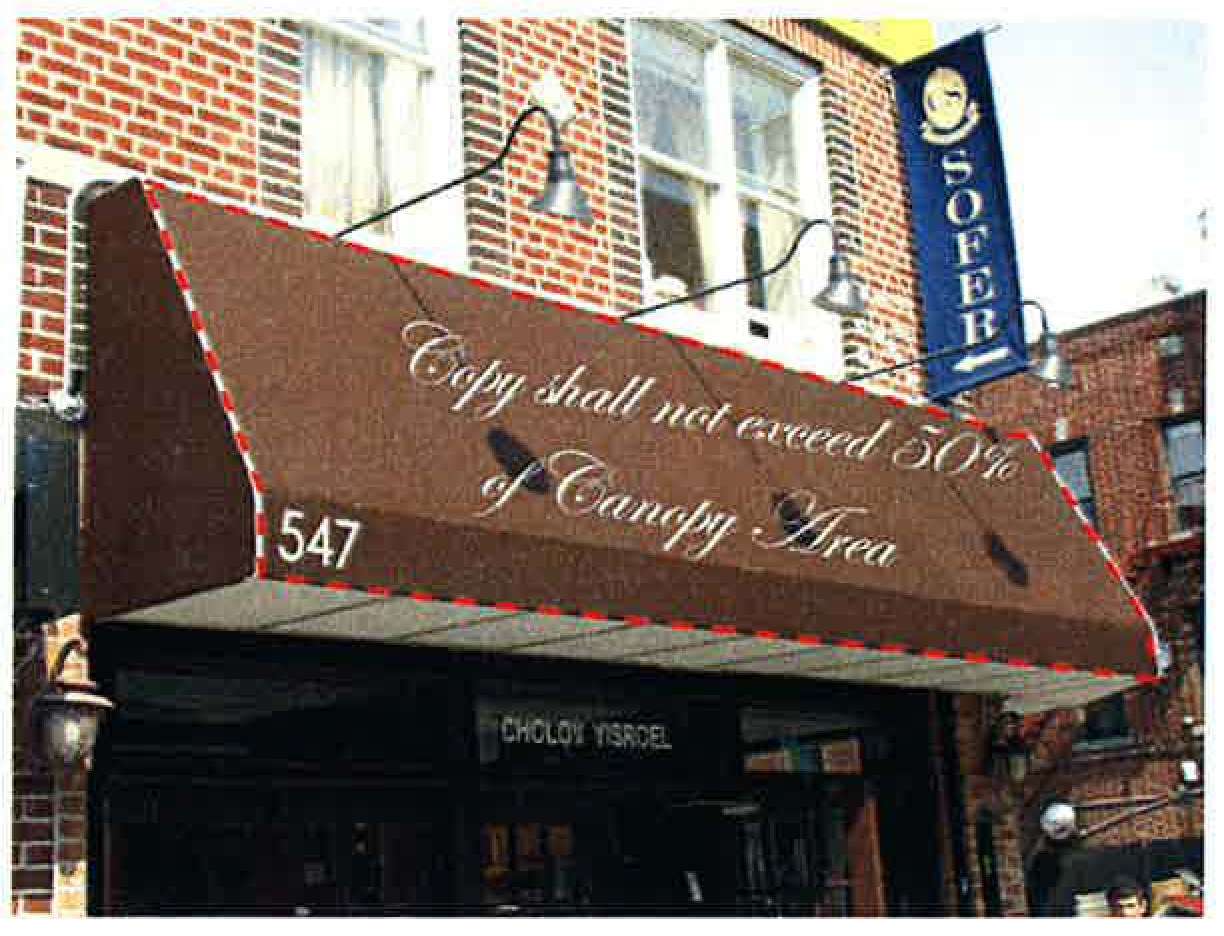
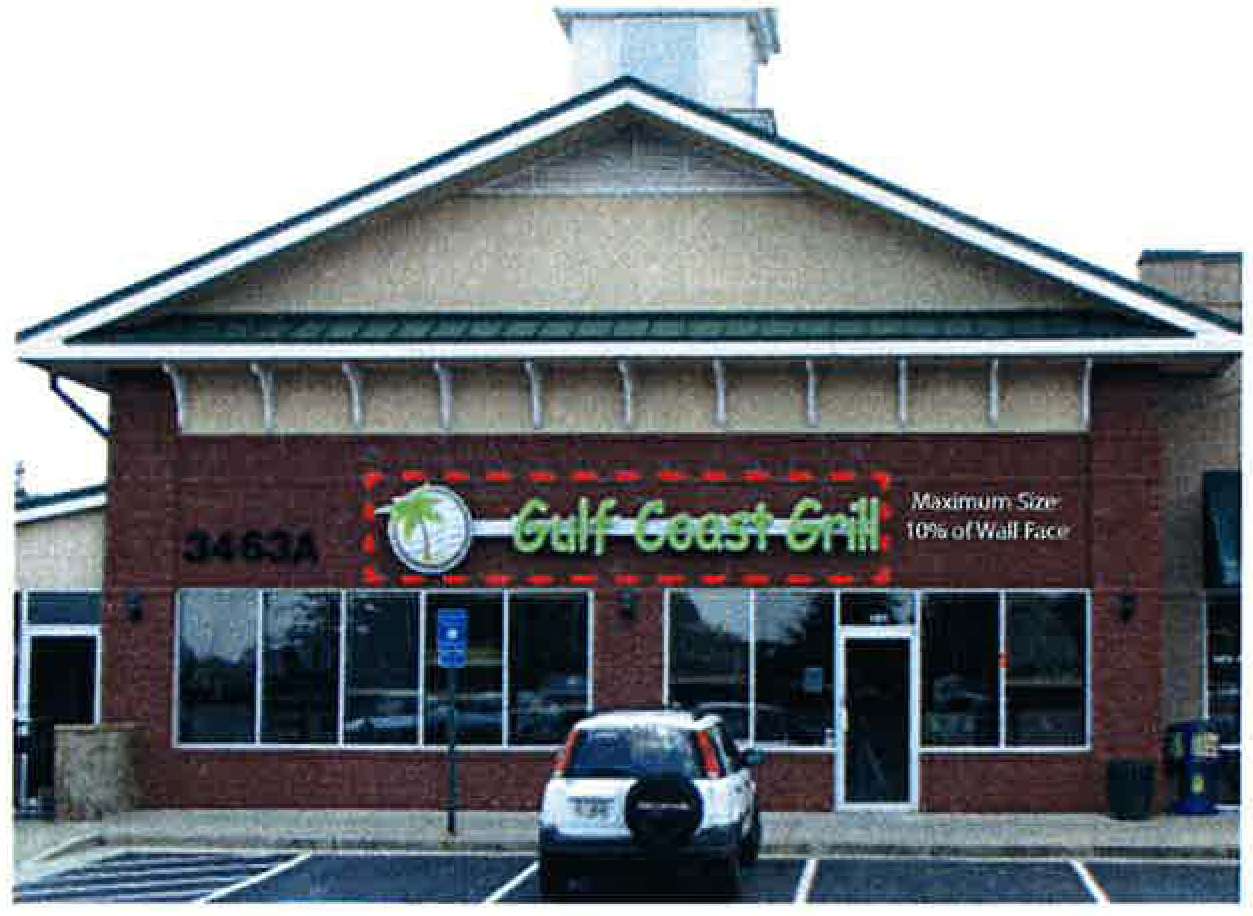
1. Illumination. Wall signs may be internally or externally lit and shall only illuminate the sign face or copy. Canopy and awning signs may be externally lit and shall only illuminate the sign face or copy.
E. Changeable Copy Signs. Changeable copy signs on a marquee, reader board, or other replaceable copy area are allowed in commercial and industrial zones, as well as in approved mixed-use projects for commercial, industrial and airport uses. The changeable wording area shall not exceed 50 percent of the total sign face. Animated signs, with the exception of city-controlled public announcement signs, are not permitted in the city. All lettering, background, and other aspects of changeable copy signs shall be maintained and repaired consistently to ensure that no discoloring or bleaching occurs. Gas station advertising signage is exempt from the 50 percent size restriction and is reviewed as a standalone commercial monument sign.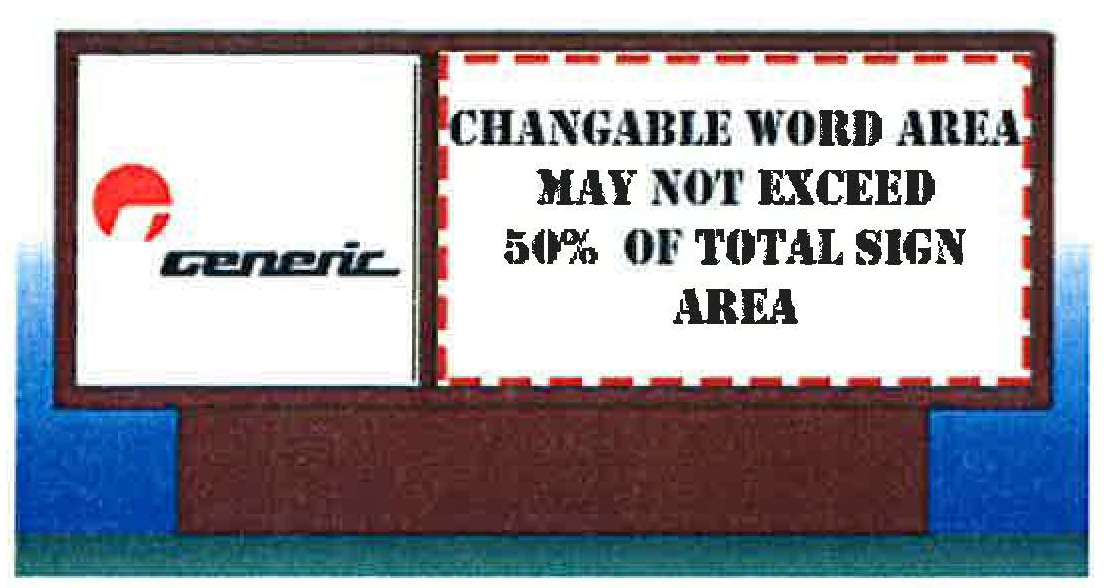
F. School Monument Signs. Monument signs for public schools, charter schools, and private schools must be used primarily for informational or civic purposes, and may include electronic message centers, reader boards, or other replaceable copy signs. These signs must comply with the following standards:
1. Height. The maximum height of a school monument sign shall be 20 feet.
2. Sign Copy. The maximum sign area shall be 160 square feet.
3. Design. All signs on a site shall have consistent materials and design elements.
4. Setbacks. Signs must follow the clear vision triangle standard and may not cause a traffic/visibility concern. The specific sign location shall be approved by the planning director or his/her designee.
5. Electronic message centers/reader boards shall also meet these criteria:
a. Electronic message boards or reader boards shall not exceed 45 square feet.
b. Electronic message boards or reader boards may not exceed 50 percent of the total sign area.
c. Electronic message centers shall be equipped with a sensor or other device that automatically determines the ambient illumination and must be programmed to automatically dim according to ambient light conditions and comply with maximum nighttime brightness and illumination standards found in EMMC 17.80.060(D), Sign Illumination.
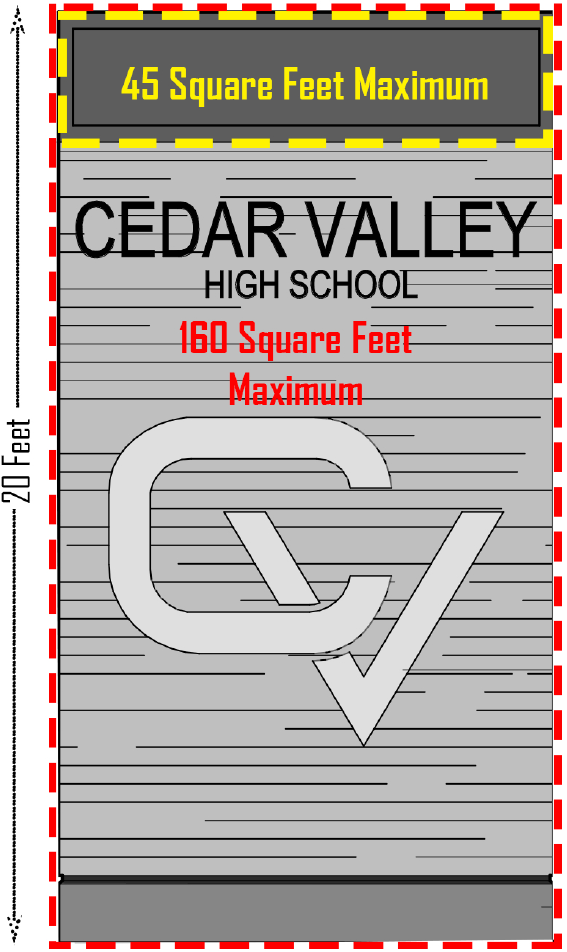
[Ord. O-03-2022 § 2 (Exh. A); Ord. O-05-2019 § 2 (Exh. A); Ord. O-08-2016 § 2 (Exh. A); Ord. O-06-2010 § 2 (Exh. A); Ord. O-12-2009 § 2 (Exh. A); Ord. O-26-2008 § 2 (Exh. A § 16.7); Ord. O-18-2008 § 2 (Exh. A § 16.7); Ord. O-17-2006 § 2 (Exh. 1 § 16.7); Ord. O-23-2005 § 3 (Exh. 1(1) § 16.7)].
17.80.080 Off-premises ladder signs.
Directional off-premises double-faced ladder signs located in the shoulder of the city’s right-of-way (ROW) along city streets are only permitted as this chapter allows. No other off-premises signs are permitted in the right-of-way, unless specifically allowed in this chapter. These ladder signs are intended to direct traffic to a business with an active city business license, subdivision or development project, model home, neighborhood, city facility or park, or not-for-profit entity. Ladder signs and sign inserts/slats shall comply with the following requirements:
A. Allowed Signs. Ladder signs are intended to direct people to, and/or advertise for, a licensed business, model home, new subdivision, city facility or park, not-for-profit entity, neighborhood, or community event. All advertisers must have an active Eagle Mountain City business license (if required to obtain a license) and be current members of the Eagle Mountain Chamber of Commerce. Advertising priority shall be given in the following order:
1. Commercial or home-based businesses located within Eagle Mountain City and nonprofits with primary operations within Eagle Mountain City.
2. Residential or commercial developers advertising for active projects within Eagle Mountain City.
3. Commercial or home-based businesses not located within Eagle Mountain City and nonprofits with primary operations outside Eagle Mountain City.
B. Application. Interested advertisers shall submit, on forms prepared by Eagle Mountain City, an application to the economic development director or Eagle Mountain Chamber of Commerce if a separate concessions agreement has been entered into, to be added to a wait list for advertising space on ladder signs. Application shall include:
1. Business name, address, and business type.
2. Eagle Mountain City business license number (if required).
3. Proof of Eagle Mountain Chamber of Commerce membership.
4. Signage requested.
5. Preferred location of sign.
C. Sign Inserts. The sign inserts may contain advertising and/or directional information. All advertising copy shall be approved by the economic development director or designee. Sign copy shall be readable from 30 feet (minimum of three-inch-tall letters). The logo at the top of each sign shall be the approved Eagle Mountain City logo or as approved by city council. There are four allowable insert sizes on each ladder sign structure: small (16-inch by 72-inch), medium (32-inch by 72-inch), large (80-inch by 72-inch) or extra-large (96-inch by 72-inch) sign inserts. The total advertising area may not exceed 96 inches by 72 inches. Advertisers may reserve a maximum of two large or extra-large size signs throughout the city. Any additional space would be limited to small or medium size sign inserts. The maximum sign structures a single entity, or its associated affiliates, may advertise on is five.
D. Sign Ownership. The city shall maintain ownership of all signs, and may contract out the construction, maintenance, and management of the signs. The city may place directional signs leading to city facilities in any appropriate right-of-way location.
E. Billing and Payment. Eagle Mountain City or designee may bill advertisers on a semiannual or annual basis. Signs may be removed for nonpayment after 30 days.
F. Maintenance. Sign structures and slats shall be maintained in good repair and shall be repainted, repaired, or otherwise maintained in good visual condition.
G. Location. Signs may be located on arterial or collector roads throughout the city, and generally spaced at least 1,000 feet apart, excluding any ladder signs used exclusively for city facilities. Within business areas and near major intersections the signs may be spaced closer together, but no less than 300 feet apart. No on-site or commercial advertising sign existing at the time of relocation of or construction of a new ladder sign may be blocked or obstructed. Specific ladder sign locations are designated on the approved map. If a sign location is requested outside of the approved map, the city council may amend the map and approve the new location. In all cases, the placement of signs shall not create a traffic hazard.
H. New Signs. The economic development director or designee shall determine which signs from the approved map should be constructed. Businesses shall be drawn from the wait list. Existing signs should be filled before new signs are added.
I. Maximum Number. Excluding any directional ladder signs to city facilities, the maximum number of ladder signs that will be permitted in the rights-of-way is 60. [Ord. O-43-2023 § 2 (Exh. A); Ord. O-32-2022 § 2 (Exh. A); Ord. O-19-2019 § 2 (Exh. A); Ord. O-08-2016 § 2 (Exh. A); Ord. O-02-2012 § 2 (Exh. A); Ord. O-06-2010 § 2 (Exh. A); Ord. O-12-2009 § 2 (Exh. A); Ord. O-26-2008 § 2 (Exh. A § 16.8); Ord. O-18-2008 § 2 (Exh. A § 16.8); Ord. O-17-2006 § 2 (Exh. 1 § 16.8); Ord. O-23-2005 § 3 (Exh. 1(1) § 16.8)].
17.80.090 Special events signs.
A. On-Premises Special Event Signs. The planning director or designee may approve a permit for on-premises special event signs, such as flags, banners, or other signs, subject to the following:
1. For each business location, one permit (for up to two signs) may be obtained at a time and up to one permit may be obtained in a calendar year for the following:
a. For each permit, the maximum sign copy may not exceed 32 square feet in size for one sign or a total of 32 square feet between two signs.
b. Signs may not be posted or visible for a period of more than 60 consecutive days.
2. For each business location, one permit (for up to four signs) may be obtained at a time and up to three permits may be obtained in a calendar year for the following:
a. For each permit, the maximum sign copy may not exceed 32 square feet in size for one sign or a total of 32 square feet between four signs.
b. Signs may not be posted or visible for a period of more than 12 consecutive days.
3. On-premises special event signs may include signs used for advertising a special event such as a business grand opening, special business sale event, employment opportunity, registration events, or other similar events or activities.
4. The planning director may approve on-premises special event signs to be located within or partially within the public right-of-way directly adjacent to a business location.
B. Right-of-Way Special Event Signs. The planning director or designee may approve a permit for special event signs such as flags, banners, or other signs for the purpose of temporarily advertising special events within the public right-of-way subject to the following:
1. No more than one permit (for up to four signs) may be obtained at a time and no more than three permits may be obtained in a calendar year.
2. Right-of-way special event signs may include signs used for advertising a fundraiser event, concert, school activity, farmers market, parade of homes, or other similar event that the planning director or designee determine to be special events. Special events do not include small, private events like yard sales, garage sales, moving sales or lost pet signs.
3. For each permit, the maximum sign copy may not exceed 32 square feet in size for one sign or a total of 32 square feet between up to four signs.
4. Signs may not be posted for a period of more than 12 consecutive days.
5. The permit holder is solely responsible to remove the signs by the appropriate date.
6. Right-of-way special event signs are not allowed on private property.
C. Inflatable Special Event Signs. The planning director or designee may approve a permit for a tube man inflatable sign (a.k.a. skydancer, wacky waving inflatable arm, or fly guy) subject to the following:
1. The sign will be located in commercial, business park, commercial storage, or industrial zones.
2. The maximum height of the sign does not exceed 22 feet. The diameter at the base of the sign does not exceed 30 inches.
3. Signs may not be operational or visible for a period of more than 12 consecutive days.
4. For each business location, no more than one permit for up to two inflatable signs may be obtained at a time and no more than three permits may be obtained in a calendar year.
5. Signs shall be set back a distance equal to or greater than the height of the sign from all rights-of-way, lot lines, and overhead utility lines, and shall be spaced no closer than 25 feet to other inflatable signs.
D. Approval Process. An application for a special event sign permit together with the special event sign permit application fee must be made on forms provided by the city. Any special event sign permit application that is not approved by the city within 30 days shall be deemed denied.
E. Restriction on Location. Temporary right-of-way signs may not be located in the park strip (between the street and the sidewalk), but may be located between the sidewalk and the property line or fence. Temporary signs shall not be placed in the public right-of-way, a required parking space, a driveway, or in a manner that obstructs points of access. No sign shall be positioned in such a manner as to result in the creation of an unsafe visual clearance at any intersection or driveway location. Signs may not be placed on utility poles, light poles, fences, or trees.
F. Penalty for Violation. Any person or entity that places or installs a special event sign without a permit shall be subject to a fine of $250.00 for each day of the violation. The planning director may also withhold approval of any new special event sign permit for a period of two years from the date of the last violation. [Ord. O-03-2020 § 2 (Exh. A); Ord. O-03-2018 § 2 (Exh. A); Ord. O-08-2016 § 2 (Exh. A); Ord. O-06-2010 § 2 (Exh. A); Ord. O-12-2009 § 2 (Exh. A); Ord. O-26-2008 § 2 (Exh. A § 16.9); Ord. O-18-2008 § 2 (Exh. A § 16.9)].
17.80.100 Yard sale temporary signage.
Small private events such as yard sales, garage sales, and moving sales must comply with the following signage standards:
A. Sign Copy. Signs may be no larger than four square feet in size.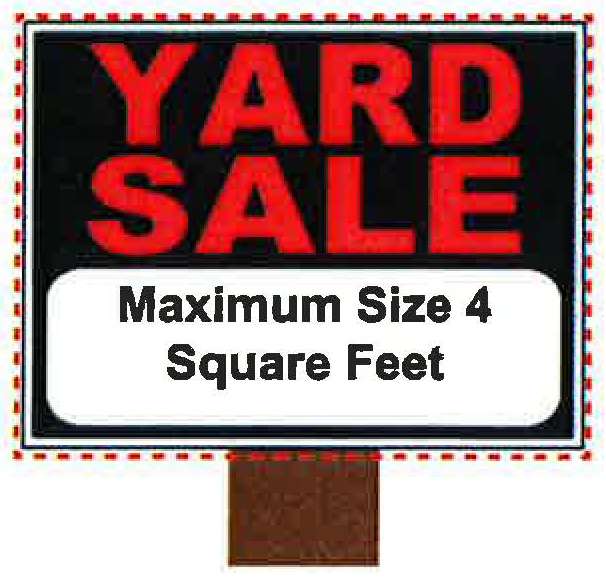
B. Location. Signs must be located on private property, unless the sale is registered with the city prior to the date of sale for temporary right-of-way signage. On major streets (arterial and major collectors) signs may not be located in the park strip (between the street and the sidewalk/trail), but may be located between the sidewalk and a property line or fence. Signs may not be placed on utility poles, light poles, fences, or trees. On local roads, signs are allowed in the park strip.
C. Duration. Temporary signs in the right-of-way that serve as directional signs to the event may be posted on the day of the sale only, and must be removed by the end of the day. It is the owner’s responsibility to remove all signage during the appropriate time period. No sale or signage will be permitted for more than two consecutive days.
D. Approval Process. The yard/garage sale must be registered with the city for any signage to be allowed in the public right-of-way. Any sign in the public right-of-way that is not registered with the city may be immediately removed. [Ord. O-08-2016 § 2 (Exh. A); Ord. O-02-2016 § 2 (Exh. A); Ord. O-06-2010 § 2 (Exh. A)].
17.80.110 Community entrance signs.
Community entrance signs located in the median or shoulder of the city’s right-of-way (ROW) along streets classified as arterials or collectors shall only be allowed under specific agreement with the city. Community entrance signs shall be constructed, installed, and maintained at the expense of the original applicant in accordance with the specifications outlined in the submitted application and as determined by the city council. The exact location of each sign and the sign copy shall be subject to review and approval by the Eagle Mountain planning commission and city council.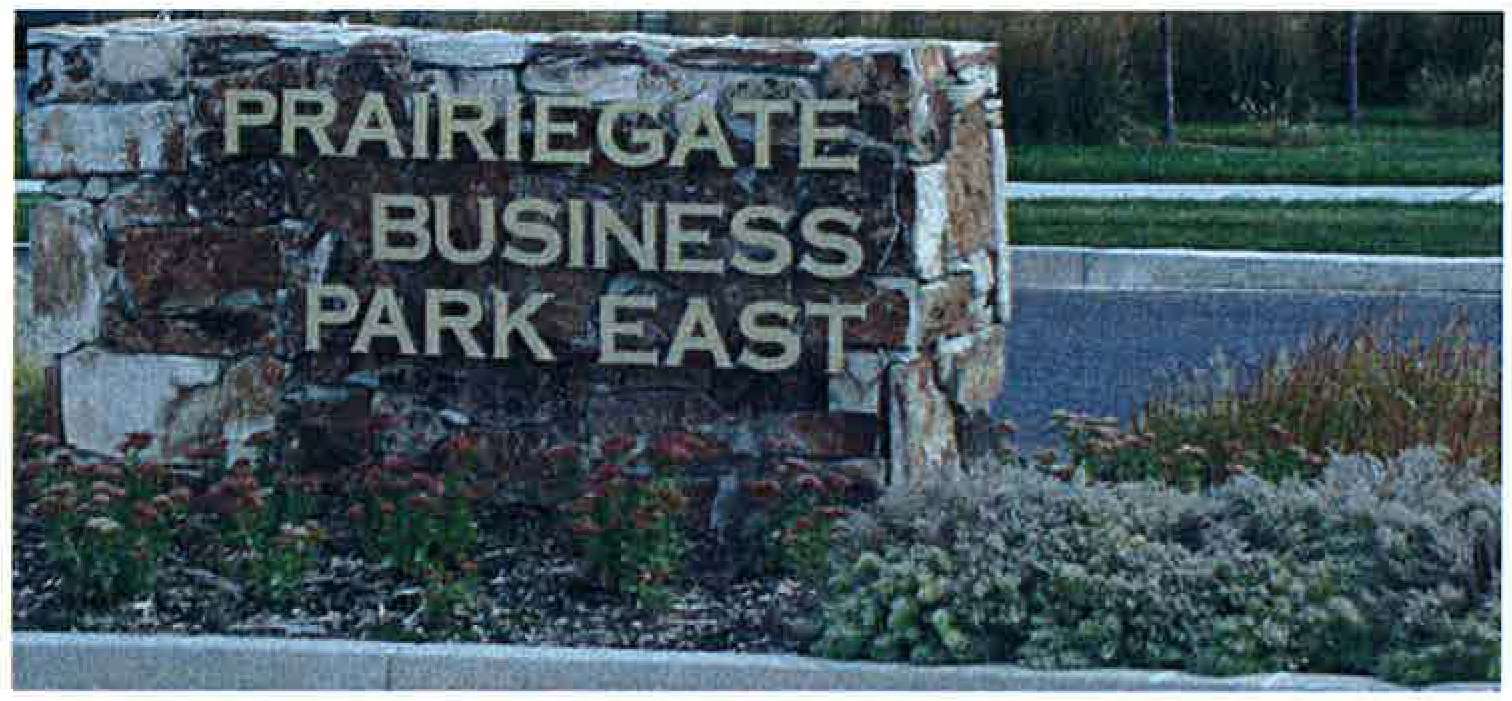
A. Approval Process. Community entrance signage shall not be construed as an absolute right upon submission of an application and does not require the approval body to take action based upon findings of fact. At their discretion, the planning commission may recommend and the city council may approve community entrance signs along streets classified as arterials and collector roads. The placement of the signs shall not create a traffic hazard. Since these signs are within the city’s right-of-way, the applicant must enter into an agreement to lease the city’s property. The city council shall approve the agreement, which will detail the terms and conditions of the property lease as well as the design of the signage. The lease fee shall be equal to the fee established in the city’s current consolidated fee schedule for off-premises ladder signs. [Ord. O-08-2016 § 2 (Exh. A); Ord. O-06-2010 § 2 (Exh. A); Ord. O-12-2009 § 2 (Exh. A); Ord. O-26-2008 § 2 (Exh. A § 16.9); Ord. O-18-2008 § 2 (Exh. A § 16.9); Ord. O-17-2006 § 2 (Exh. 1 § 16.9). Formerly 17.80.100].
17.80.120 Exempt signs.
All signs exempt from the permit process shall comply with the general provisions of this chapter except traffic signs approved by the city engineer. No sign permits shall be required for the following signs:
A. On-Premises Project Sign. One on-premises project sign may be erected for projects that have received either site plan approval or final subdivision approval. This sign may contain information about the approved business or project, and shall not exceed eight feet in height and 32 square feet of sign copy per side if double-faced. This sign shall be allowed until the development is complete or within one year of posting, whichever occurs first.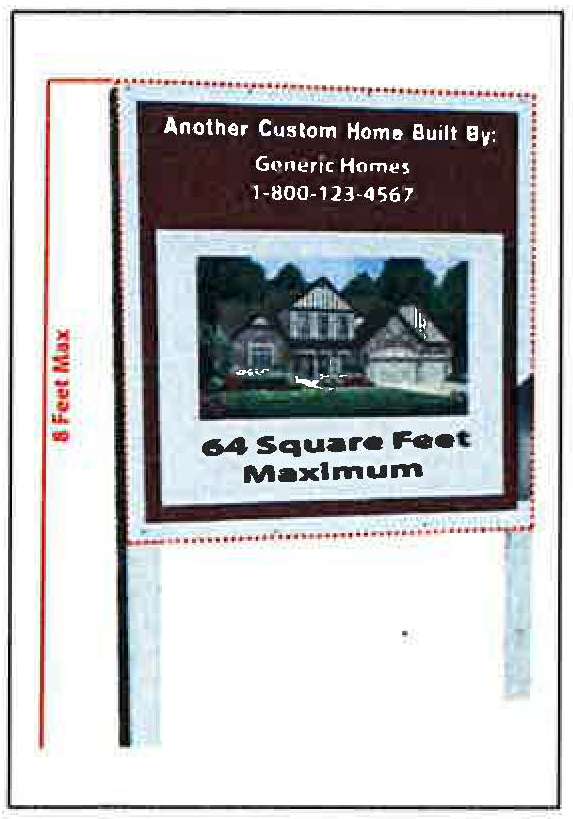
B. On-Premises Real Estate Sign. One on-premises real estate sign for lots less than one acre in size. The real estate sign shall not exceed eight feet in height and nine square feet of sign copy per side if double-faced. For lots that are larger than one acre in size, the property will be allowed to display a sign that shall not exceed 10 feet in height and 16 square feet of sign copy per side if double-faced. Real estate signs shall be allowed until the transaction with the property is complete.
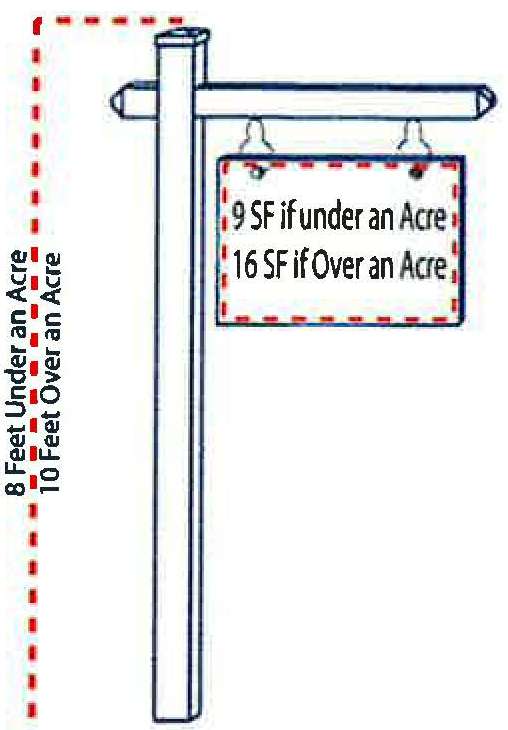
C. Political Signs. Political signs placed on private property that do not exceed eight feet in height and 32 square feet per side if double-faced; provided, that such signs do not violate any other provisions of this chapter including provisions pertaining to the placement of signs in the public right-of-way.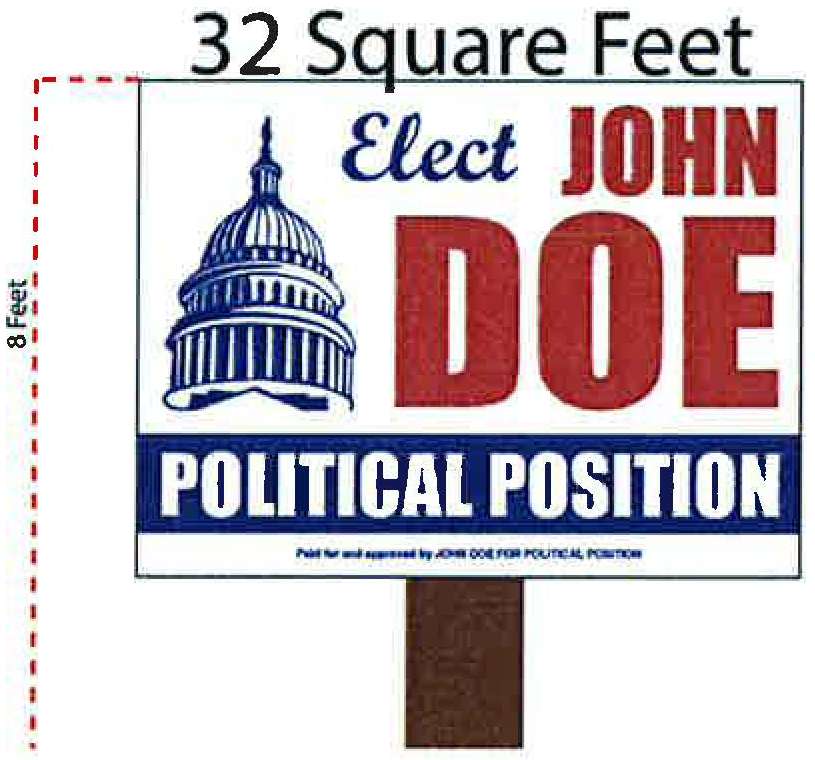
D. Temporary Use Signs. Signs for temporary uses that have obtained a business license, if required, from the city may be installed as follows: one sign on a temporary basis located on premises that shall not exceed eight feet in height and 32 square feet of sign copy per side if double-faced. Temporary use signs will be allowed as long as the temporary use has a business license from the city.
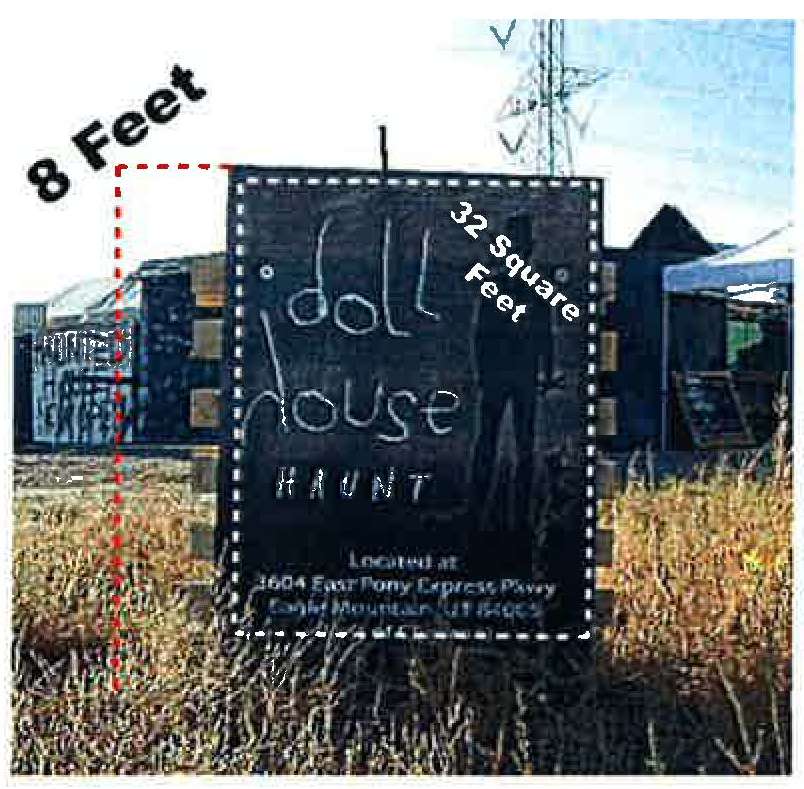
E. Property Signs. Property signs no larger than nine square feet of sign copy per side if double-faced. These signs shall be permitted indefinitely as long as the sign is in compliance with the general provisions of this chapter.
F. Nameplate Signs. One nameplate sign identifying owners and addresses and no larger than two square feet of sign copy per side if double-faced.
G. Traffic Signs. Traffic signs as required by law which are approved by the city engineer and erected by or on behalf of a public agency. Traffic signs deemed necessary by the city engineer may not be required to comply with provisions of this chapter.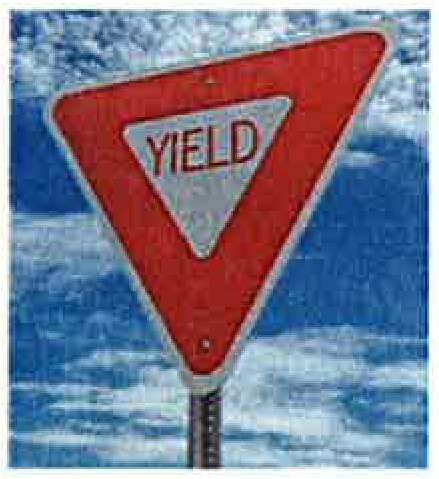
H. Civic Signs. Civic signs on private property which announce holidays or public interest events sponsored by nonprofit organizations; public service signs or signs related to community service projects not to exceed eight feet in height and 32 square feet of sign copy per side if double-faced.
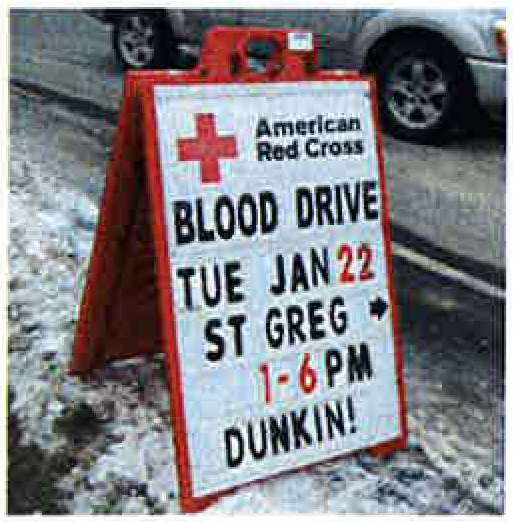
I. Window Signs. Window signs including posters, messages, or displays painted or mounted on the interior side of a window may be used to advertise special promotions.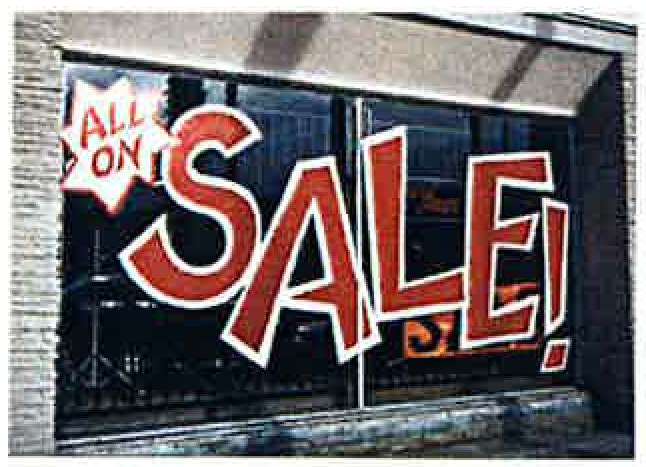
J. Public Notice. The display of official notices used by any court, public body or official, or the posting of notices by any public officer in the performance of a duty, or by any person giving legal notice at the direction of a governmental entity.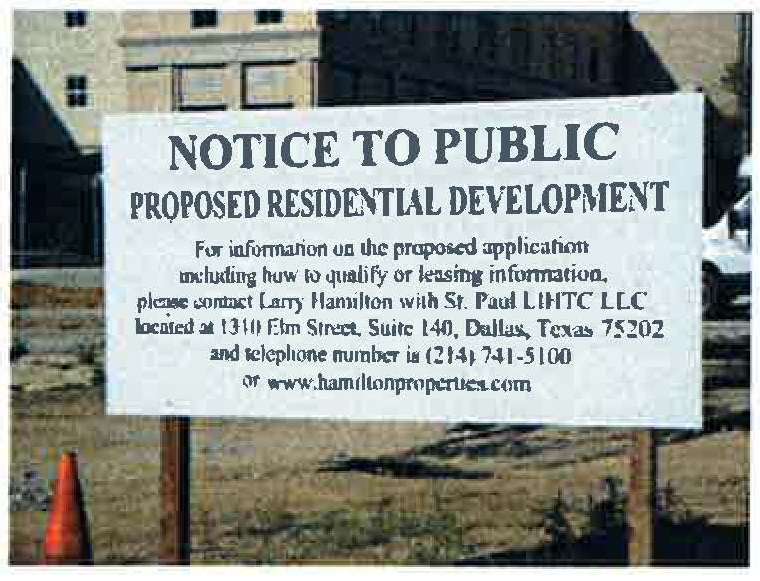
K. Community Event Signs. Temporary community event signs displayed by the city, or one of its committees, subcommittees, councils, boards, or city partner agencies, to promote community events.
L. Model Homes. One on-premises sign for model homes; provided, that the on-premises sign does not exceed 32 square feet in size. A maximum of six flags not to exceed 15 square feet each posted on flag poles not to exceed 20 feet measured from the grade level to the top of the pole. The flags’ colors shall be consistent with the on-premises sign. In addition, a single flag pole that complies with the standards for ancillary structures defined in Chapter 17.25 EMMC may be constructed. Flags allowed on this flag pole include only the national flag of the United States of America, the Utah State, and the official Eagle Mountain flags; no commercial flags shall be allowed on this flag pole. American flags shall not exceed 40 square feet in size. Two A-frame or temporary directional signs of no more than four square feet per builder per subdivision are allowed in the right-of-way adjacent to the model home and in the park strip of the nearest major street corner. These signs shall be directional only, not containing other advertising. These signs are only allowed during model home hours, and must be removed each evening at closing.
M. Real Estate Open House Signs. One A-frame or temporary directional sign of no more than four square feet for real estate open houses for individual home sales is allowed in the park strip of the nearest street corner, one day per week, to be put up no more than one hour prior to the open house and must be removed within one hour after the open house.
N. Temporary Informational Signs. Small informational signs such as lost pet signs, neighborhood or religious activity signs, youth sales signs (such as lemonade stands), and other signs for noncommercial purposes (i.e., not promoting a business of any kind, except youth sales) are allowed in the right-of-way. These signs may not be located in the park strip (between the street and the sidewalk) on major streets, but may be located between the sidewalk and a property line or fence. These signs may not be placed on utility poles, light poles, fences, or trees. The code enforcement officer has the authority to remove signs without notice if they have not been removed in a timely manner or if they present a safety hazard.
O. On-Premises Home Business Signs. Home businesses with a valid business license from Eagle Mountain City may place one nonilluminated wall sign no larger than four square feet in size on the front of the principal dwelling no higher than the first story.
P. Official Signs. Signs that are owned and operated by Eagle Mountain City and are used for informational or civic purposes, including advertising special events within Eagle Mountain City. Official signs may include electronic message centers, reader boards, or other replaceable copy signs. Official signs that do not comply with the general provisions of this chapter must be approved by the city council. Electronic signs should be turned off between the hours of 12:00 a.m. and 5:00 a.m., except in the case of necessary communications. Electronic signs shall also comply with EMMC 17.80.070(F)(5)(c) in relation to maximum nighttime brightness and illumination.
Q. Flagpoles. Any flagpole must comply with the following standards:
1. In residential zones:
a. A standalone flagpole not to exceed 35 feet in height may be installed for every residential dwelling unit.
2. In nonresidential zones:
a. Nonresidential developments may install flagpoles up to 80 feet in height.
b. Secondary flags shall be limited to state and city flags.
3. Size. The size of the flag material, when measured diagonally, shall not exceed the structural integrity of the pole.
a. If designed to accommodate such, flagpoles may hold more than one flag so long as the combined size of all flags, when measured diagonally, does not exceed one-half of the height of the flagpole.
b. National flags shall be the primary flag with all state and city flags as secondary to the national flag.
4. Location. All flagpoles shall be located outside of any public right-of-way and in a place that will not impede traffic or cause a hazard for pedestrians or vehicles. [Ord. O-01-2022 § 2 (Exh. A); Ord. O-14-2020 § 2 (Exh. A); Ord. O-03-2020 § 2 (Exh. A); Ord. O-17-2019 § 2 (Exh. A); Ord. O-05-2019 § 2 (Exh.
A); Ord. O-08-2016 § 2 (Exh. A); Ord. O-02-2016 § 2 (Exh. A); Ord. O-02-2012 § 2 (Exh. A); Ord. O-06-2010 § 2 (Exh. A); Ord. O-12-2009 § 2 (Exh. A); Ord. O-26-2008 § 2 (Exh. A § 16.10); Ord. O-18-2008 § 2 (Exh. A § 16.10); Ord. O-17-2006 § 2 (Exh. 1 § 16.10); Ord. O-23-2005 § 3 (Exh. 1(1) § 16.9). Formerly 17.80.110].
17.80.130 Prohibited signs.
The following signs as defined in EMMC 17.80.160 shall be prohibited: visible moving, revolving, or rotating parts signs, sign twisters signs, snipe/bootleg signs, vehicular signs including unlicensed, inoperable or immovable vehicles or trailer signs (but not including actively used construction trailers not functioning solely as signs), pole signs, inflated signs (except as permitted in EMMC 17.80.090), ribbons, balloons and billboards. In addition, any signs that emit sound, smoke or steam are prohibited. Staff may make an exception for memorial and honorarium ribbons. [Ord. O-03-2020 § 2 (Exh. A); Ord. O-03-2018 § 2 (Exh. A); Ord. O-08-2016 § 2 (Exh. A); Ord. O-02-2016 § 2 (Exh. A); Ord. O-02-2012 § 2 (Exh. A); Ord. O-06-2010 § 2 (Exh. A); Ord. O-12-2009 § 2 (Exh. A); Ord. O-26-2008 § 2 (Exh. A § 16.11); Ord. O-18-2008 § 2 (Exh. A § 16.11); Ord. O-17-2006 § 2 (Exh. 1 § 16.11); Ord. O-23-2005 § 3 (Exh. 1(1) § 16.10). Formerly 17.80.120].
17.80.140 Nonconforming signs.
A nonconforming sign may be maintained and repaired, even if such a repair may not bring the sign into compliance with this chapter. If a nonconforming sign is damaged or allowed to deteriorate in an amount in excess of 50 percent of its replacement cost, the sign shall not be repaired unless such a repair shall result in the sign coming into compliance with the provisions of this chapter. [Ord. O-08-2016 § 2 (Exh. A); Ord. O-06-2010 § 2 (Exh. A); Ord. O-12-2009 § 2 (Exh. A); Ord. O-26-2008 § 2 (Exh. A § 16.12); Ord. O-18-2008 § 2 (Exh. A § 16.12); Ord. O-17-2006 § 2 (Exh. 1 § 16.12); Ord. O-23-2005 § 3 (Exh. 1(1) § 16.11). Formerly 17.80.130].
17.80.150 Sign enforcement.
The planning director, or designee, shall perform the following duties and use the following procedures when enforcing sign regulations:
A. Compliance. Determine and ascertain that all signs, construction, reconstruction, or alterations of existing signs are completed in compliance with this chapter.
B. Site Inspections. Conduct site inspections to determine compliance with this chapter.
C. Instigate Proceedings. Instigate appropriate action or proceedings in any case where a sign is illegally erected, constructed, altered, repaired or maintained in violation of any city ordinance, including the provisions of this chapter.
D. Notices of Violation. Issue verbal or written notice of violation to owners or persons having control, charge or benefit of any sign that is found to be unsafe or in violation of city ordinances or this chapter, including all general provisions (EMMC 17.80.060).
E. Unsafe or Dangerous Signs. Abate and remove signs that are unsafe or dangerous.
F. Removal of Illegal Signs. Assist applicants to bring into compliance signs that are illegal under the provisions of this chapter or that are installed without a permit. The planning director or designee shall have the authority to abate and remove such signs if they are not brought into compliance within seven calendar days after written notice has been given to the owner or party in interest advertised on the sign. The person responsible for such sign shall be liable for the cost of removal and the city is authorized to effect the collection of said cost.
G. Removal of Temporary Signs. Abate and remove temporary signs posted upon private property if they are not made conforming within 72 hours after being noticed. Verbal or written notice is sufficient warning for these signs. The person responsible for such an illegal sign shall be liable for the cost of its removal and the city is authorized to effect the collection of said cost.
H. Removal of Signs on Public Property. Remove or require the immediate removal of any sign posted on public property. Such signs, though removed, shall not be destroyed for at least seven calendar days from the date of removal. In no case shall a failure to remove such signs constitute approval by the city of the illegal placement of the sign.
I. Removal of Abandoned Signs. Remove or require the removal of all signs that are nonmaintained, abandoned, or that identify a discontinued or abandoned use within 45 calendar days after giving written notice to the person having control of or receiving benefit from the sign. The person responsible for such a sign shall be liable for the cost of its removal and the city is authorized to effect the collection of said cost.
J. Continual Sign Erection without Permits. Persons who continue to erect signs without the proper permits may have the unauthorized signs removed without notice. All signs removed by the city will be impounded. Owners of impounded signs shall pay a fee before the signs are released.
K. Fines. The penalties associated with violations of this chapter shall be consistent with the consolidated fee schedule as adopted by the city council. [Ord. O-18-2021 § 2 (Exh. A); Ord. O-08-2016 § 2 (Exh. A); Ord. O-02-2016 § 2 (Exh. A); Ord. O-06-2010 § 2 (Exh. A); Ord. O-12-2009 § 2 (Exh. A); Ord. O-26-2008 § 2 (Exh. A § 16.13); Ord. O-18-2008 § 2 (Exh. A § 16.13); Ord. O-17-2006 § 2 (Exh. 1 § 16.13); Ord. O-23-2005 § 3 (Exh. 1(1) § 16.12). Formerly 17.80.140].
17.80.160 Definitions.
The following terms related to this chapter are hereby defined below:
“A-frame sign” means any sign or structure (usually freestanding, temporary and/or movable) composed of two sign faces mounted or attached back-to-back in such a manner as to form a triangular vertical cross-section through the sign faces.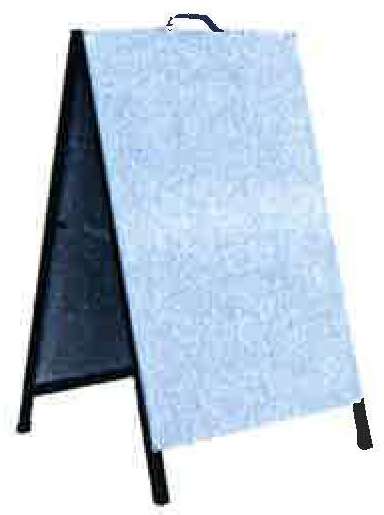
“Abandoned sign” means a sign which is located on a property or place of business which has been vacated or which remains unused for a period of time exceeding 90 days.
“Advertising sign” means a sign which directs attention to a use, product, commodity or service.
“Alteration” in this chapter means changing or rearranging any structural part, sign face, enclosure, lighting, coloring, copy (except on reader signs that have changeable copy), graphics, components or location of any sign.
“Animated signs” means signs which incorporate moving or rotating parts or other special lighting effects with flashing or intermittent lights (excluding time and temperature signs or electronic message centers).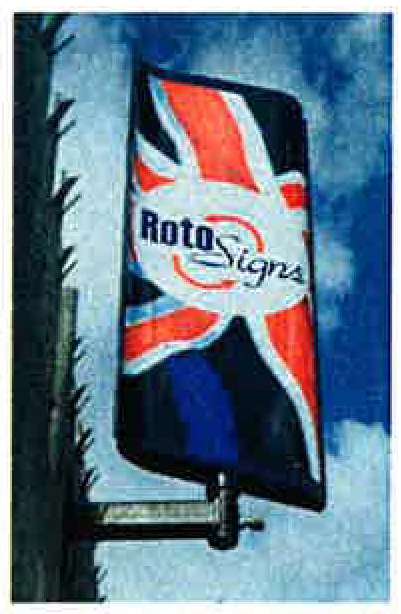
“Banner” means a building sign made of fabric, plastic, or a similar lightweight material and hung from a building, fence, wall or pole.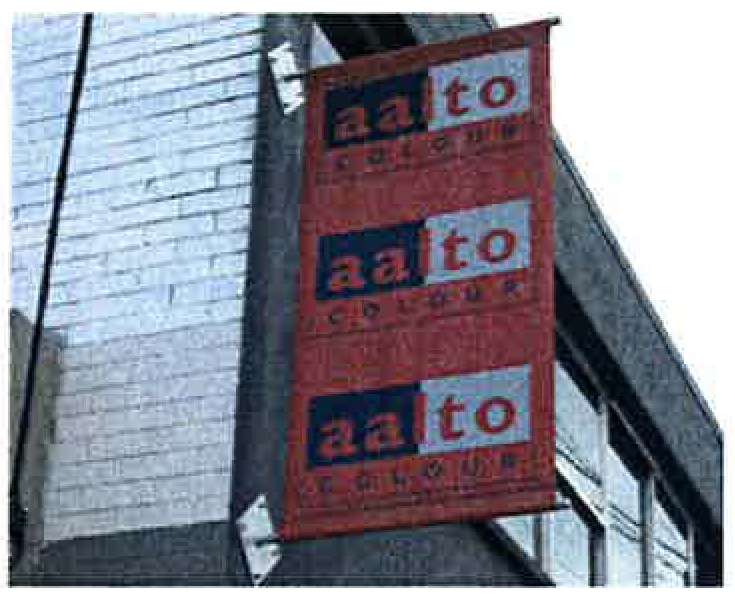
“Billboard” means an advertising sign not necessarily related to the premises on which it is located and intended for use of changeable copy by posting or repainting.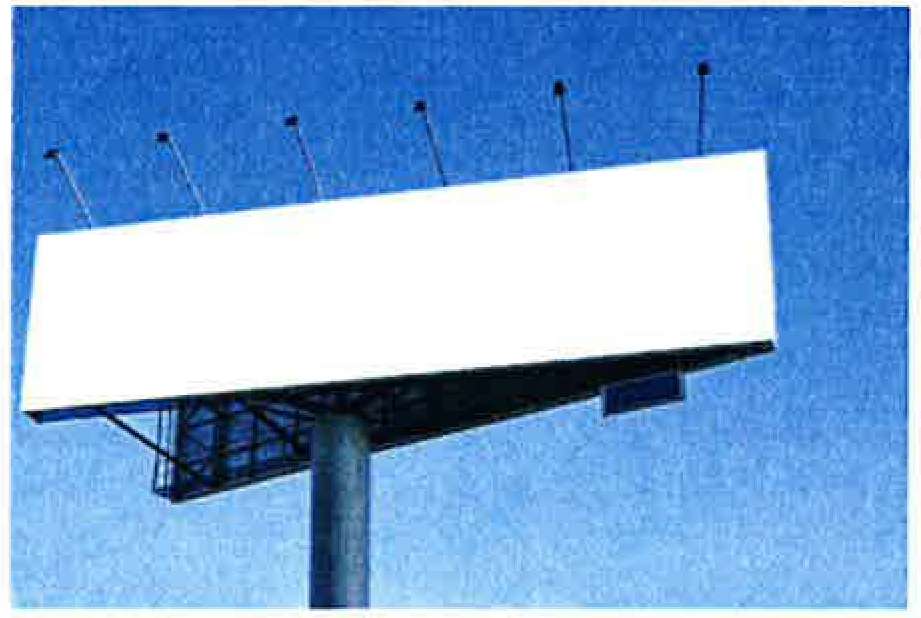
“Building sign” means any sign attached to or a part of a building. Several types of signs defined in this chapter may also be defined as building signs if they are attached to or are a part of a building.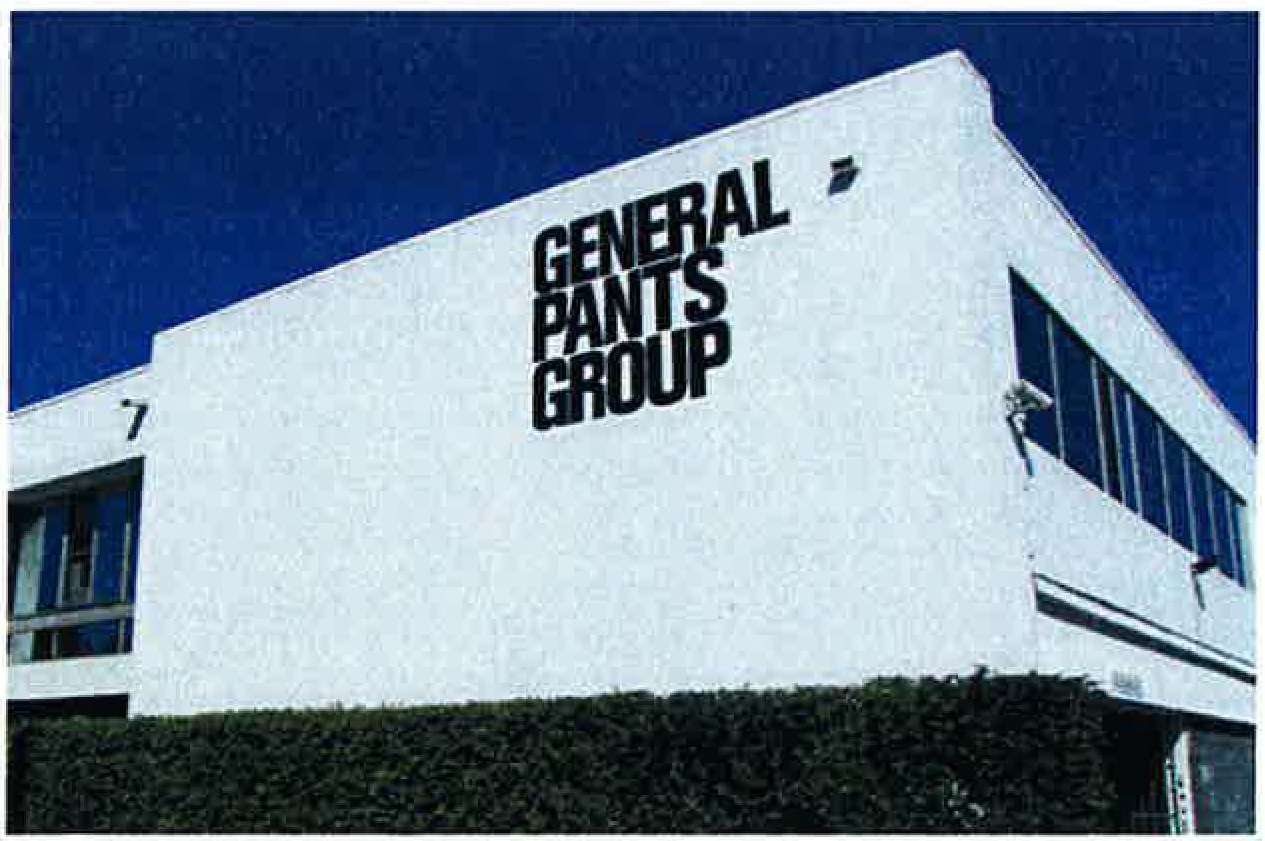
“Canopy sign” means a building sign that is part of a fabric, plastic, or similar shelter supported by a noncombustible rigid framework attached to a building, and sheltering the building’s entrance or windows. Synonymous with “awning” for the purposes of this chapter.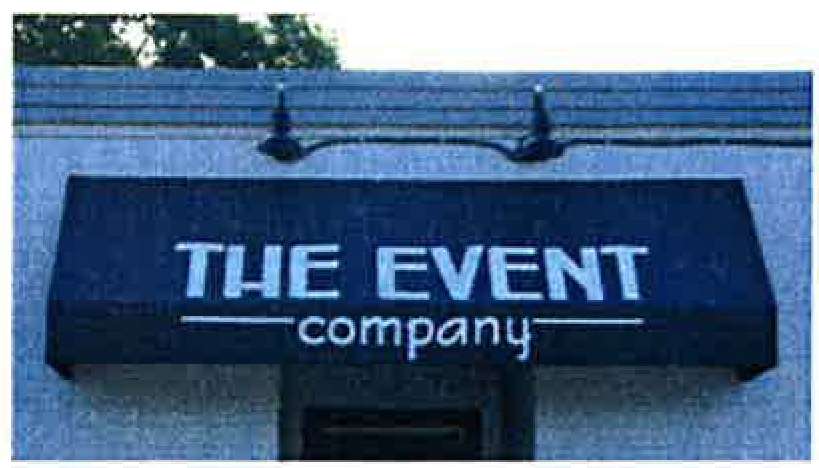
“Changeable copy sign” means a variable message sign composed of individual letters panel-mounted in or on a track system.
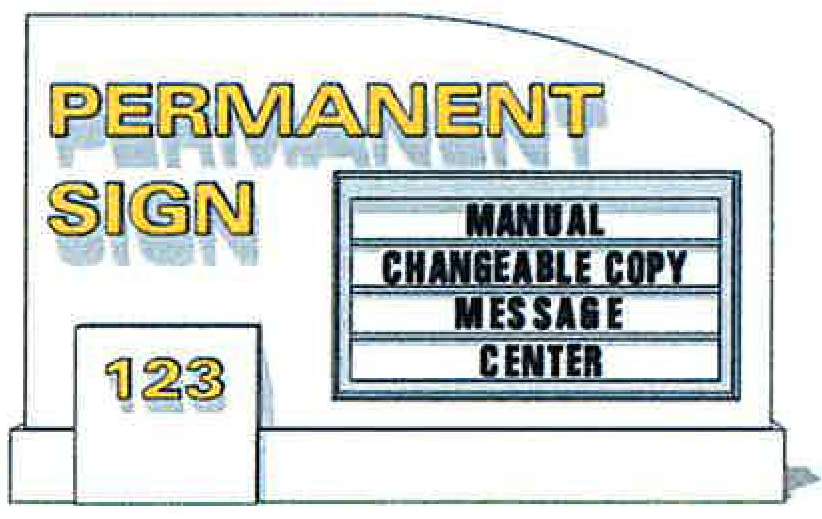
“Clear vision areas” means corner areas at intersecting streets and/or driveways in which unobstructed vision of motor vehicle operators is maintained (see Chapter 17.60 EMMC for the specific requirements and an illustration of required clear vision areas).
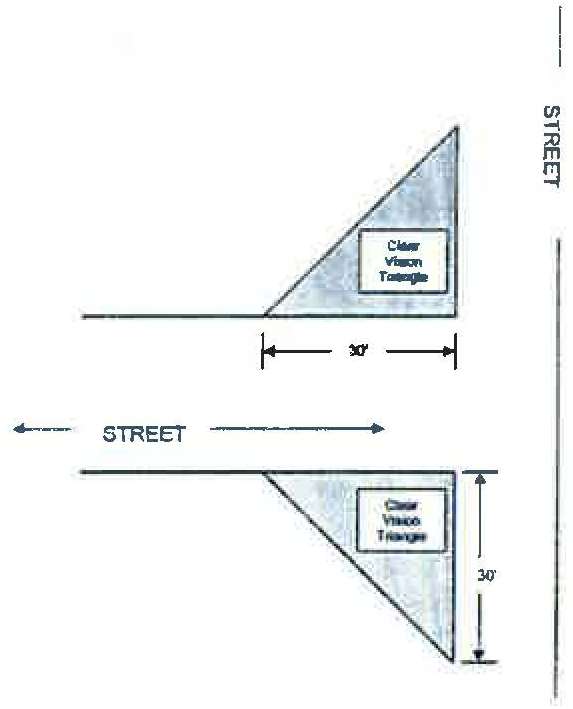
“Community entrance sign” means a sign used to welcome people to the city or a monument at the entrance to specific neighborhoods indicating the name of the project, subdivision or neighborhood. Any community entrance sign not required to be installed as part of a master development plan or final plat shall be processed through the planning department with the appropriate application and fee.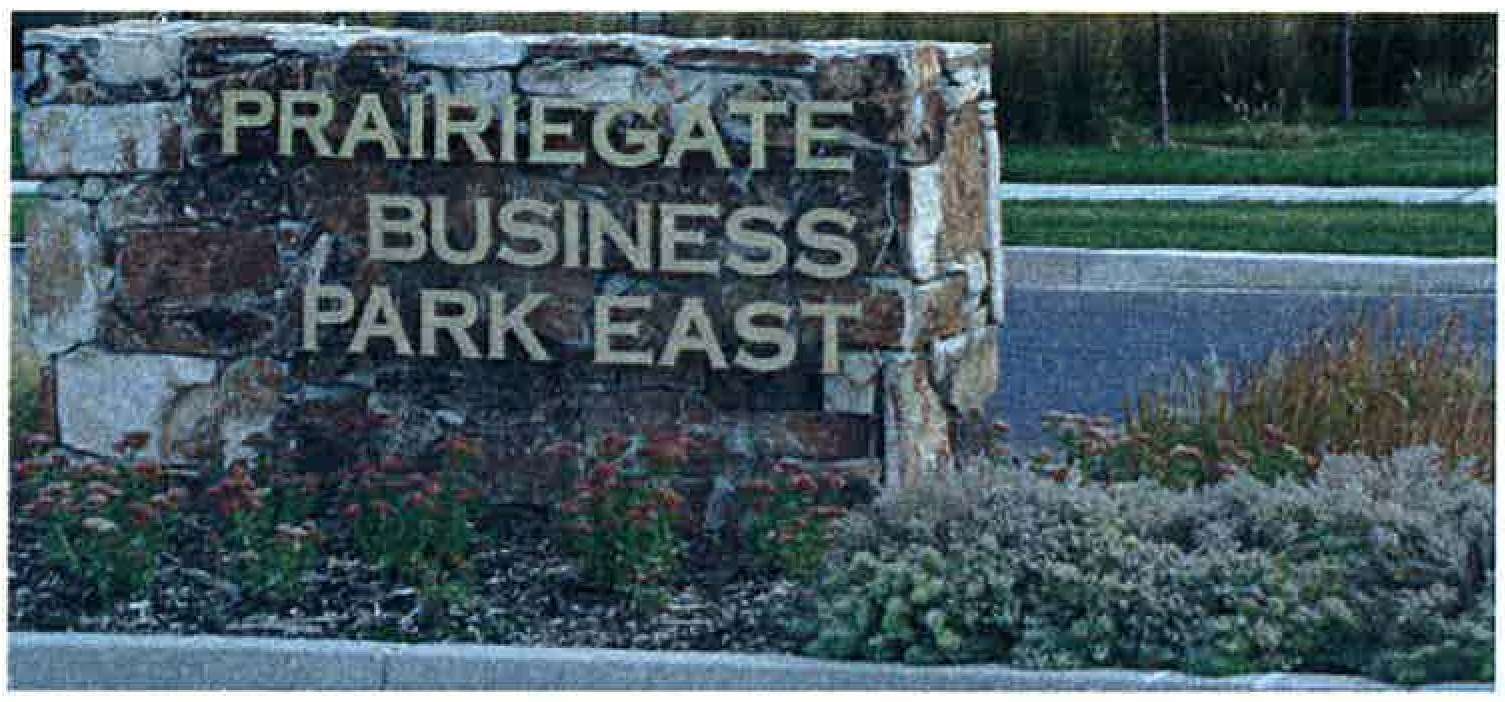
“Community event sign” means a temporary sign displayed by the city, or one of its committees, subcommittees, councils, boards or city partner agencies, to promote community events.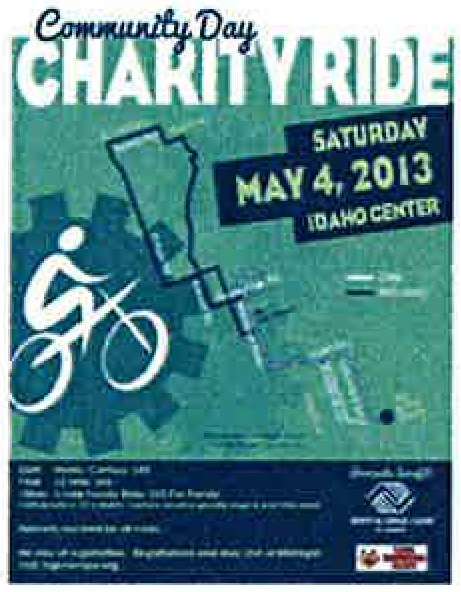
Cornerstone. A cornerstone is carved or cast into a building, or a metal plaque permanently attached to a building. It carries no commercial message, but may include the building’s name, the date of its completion, and the names of owners, architects, contractors, etc.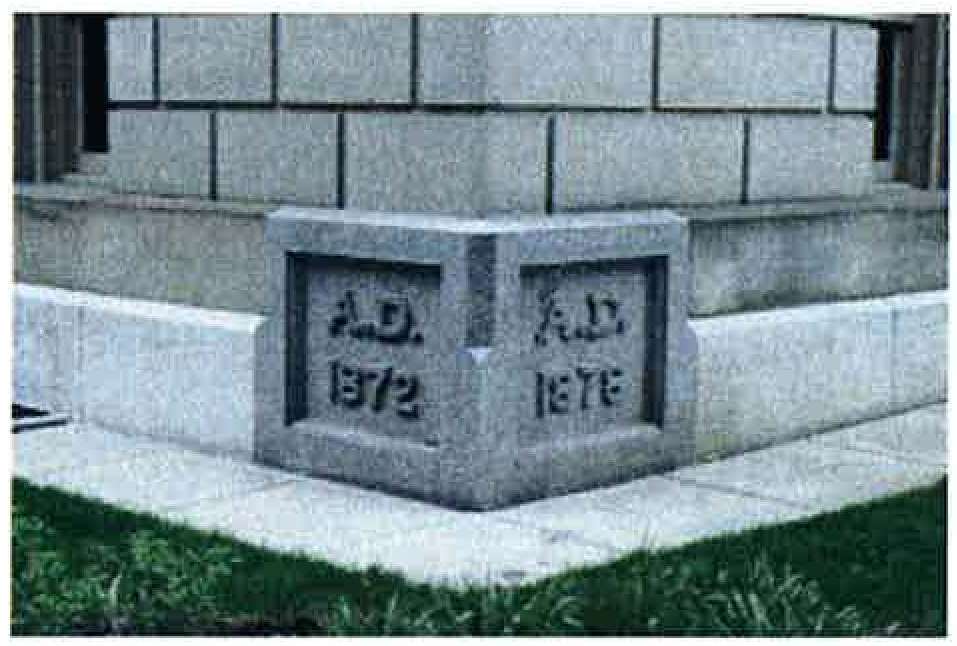
Directional Signs. Directional signs are defined in two general categories as follows:
1. Any sign used to display the address of a commercial or industrial building or use, or to identify points of access, the direction of travel, and similar functions in off-street parking and loading areas. Such signs display no advertising or promotional copy, but may bear a logo or be in a distinctive design associated with the use to which they are accessory. Such name or logo shall not exceed more than 50 percent of sign area.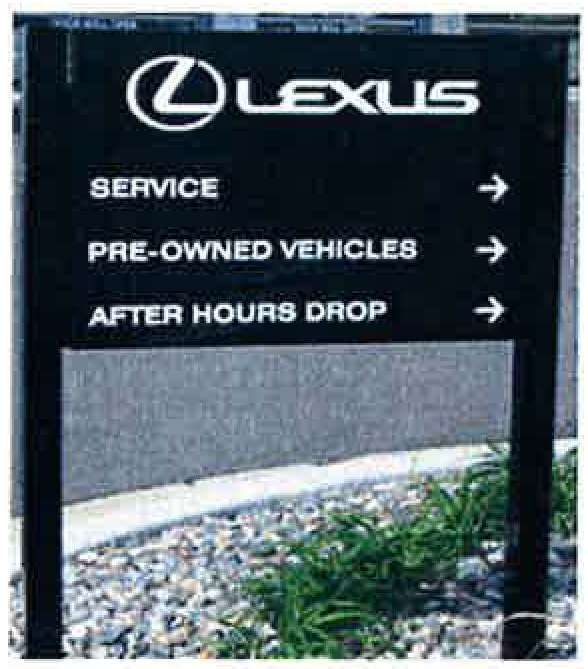
2. A sign erected by an official government agency to denote the name of any thoroughfare; to point out the route to any city, educational institution, public building, historic place or hospital; to direct and regulate traffic; and to denote any railroad crossing, bridge or other transportation facility for the convenience and safety of the general public.
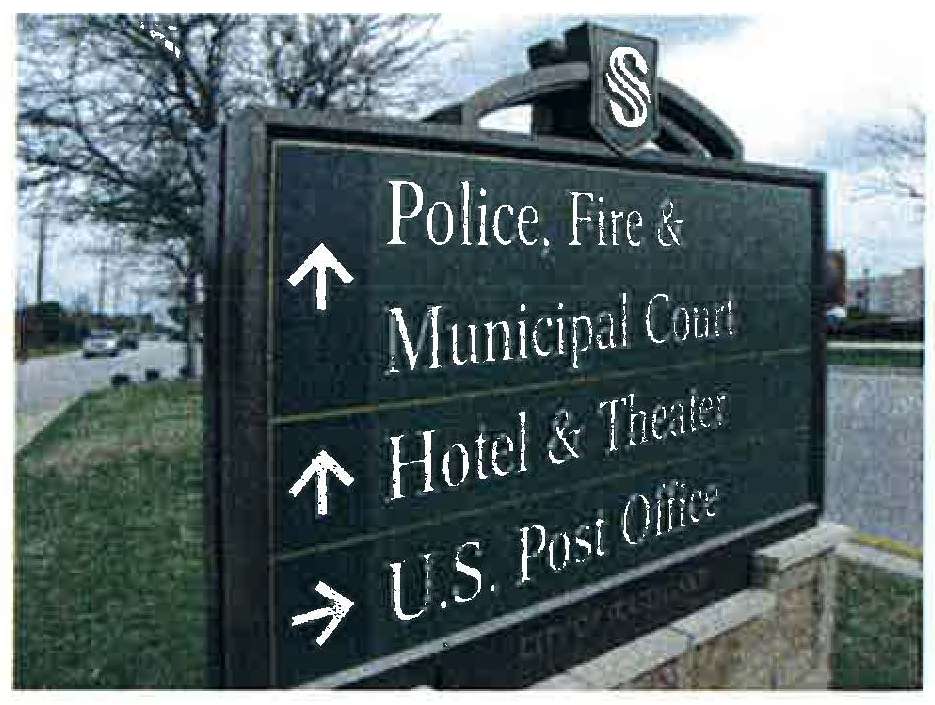
“Double-faced sign” means a sign with two faces, back-to-back.
“Flag” means fabric, plastic, or similar lightweight material hung from a pole that may bear a logo, which is displayed with the intent to advertise or attract attention to a commercial enterprise.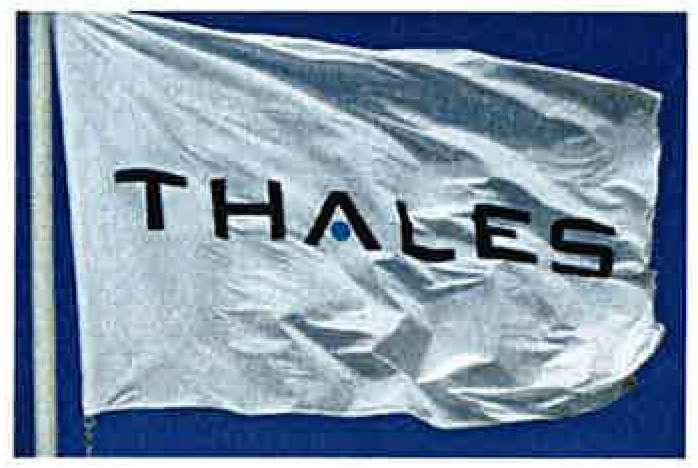
“Freestanding sign” means any sign that has its own supporting structure, rather than being attached to and supported by a building.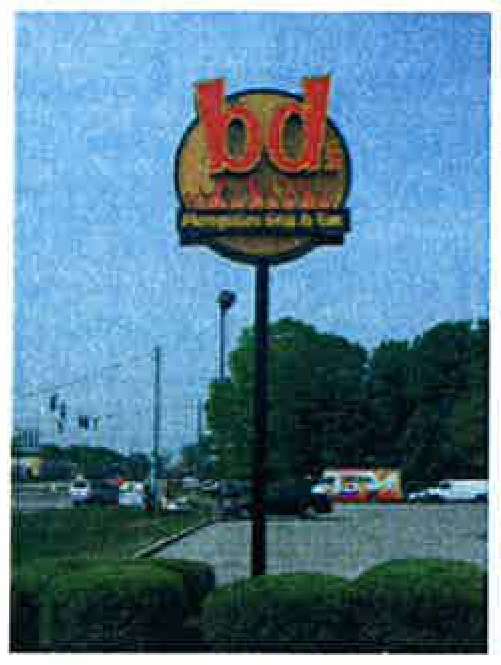
“Frontage” means the distance or length of the side of any parcel that is adjacent to any public or private street, but does not include alleys, watercourses or limited access roadways.
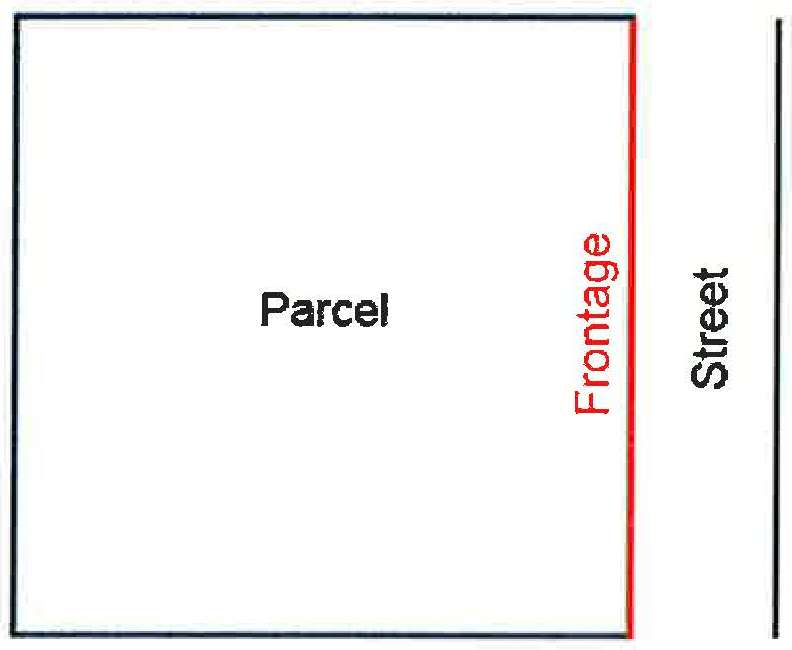
“Illuminated sign” means any sign designed to emit artificial light or designed to reflect light from one or more sources of artificial light.
“Inflatable sign” means any advertising device which is supported by heated or forced air or lighter-than-air gases.
“Monument sign” means a freestanding sign whose sign face extends to the ground or to a base or pedestal.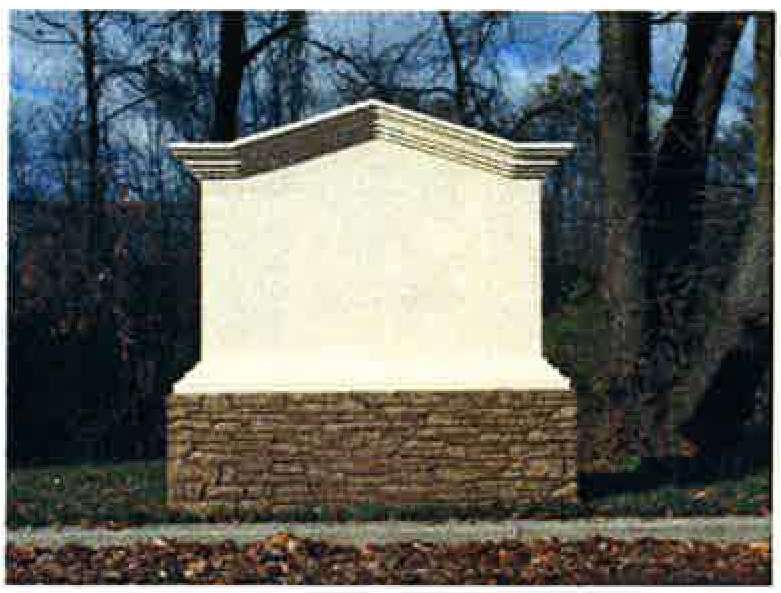
“Movable, freestanding sign” means any sign not affixed to or erected into the ground.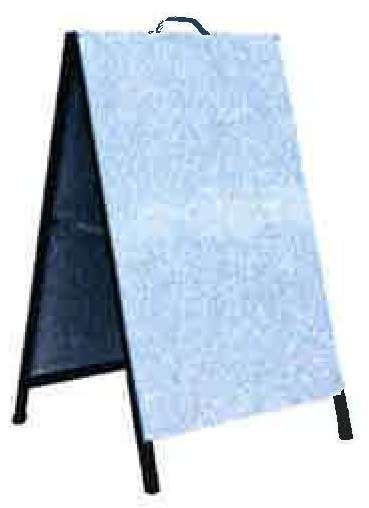
“Nonconforming sign” means a sign or sign structure which lawfully existed prior to the adoption of the ordinance codified in this chapter but which does not conform to all or a part of the requirements of this chapter.
“Off-premises sign” means any sign which advertises a use, establishment, product or service that is sold, produced, manufactured or furnished at a place other than on the property on which said sign is located.
“On-premises sign” means a sign that advertises or directs attention to a use or establishment located on premises or a product or service available on premises.
“Pole sign” means a freestanding identification or business sign, which is supported by a pole(s), mounted permanently in the ground and the base of the sign copy is greater than nine feet in height.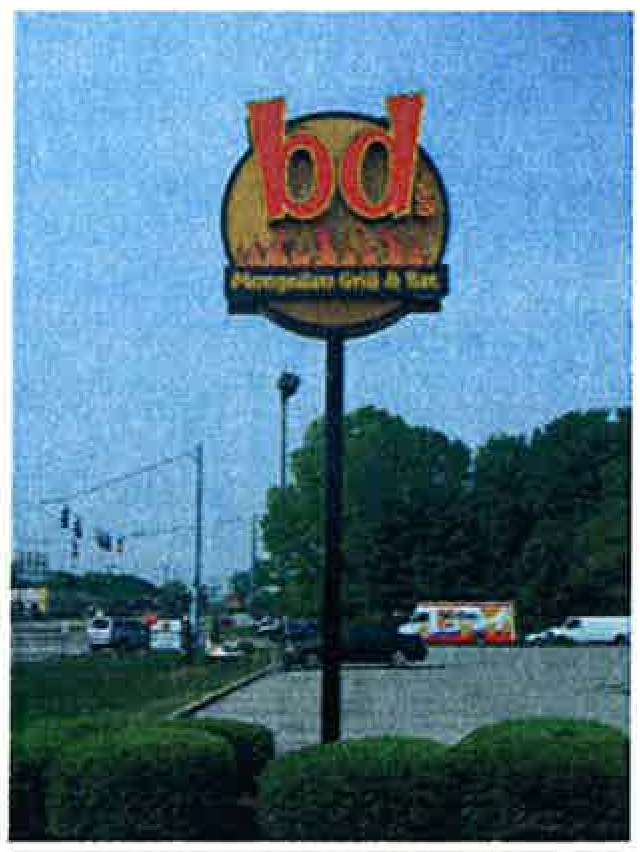
“Political sign” means a temporary sign advertising a candidate for public office, a political party or a measure or issue scheduled for an election.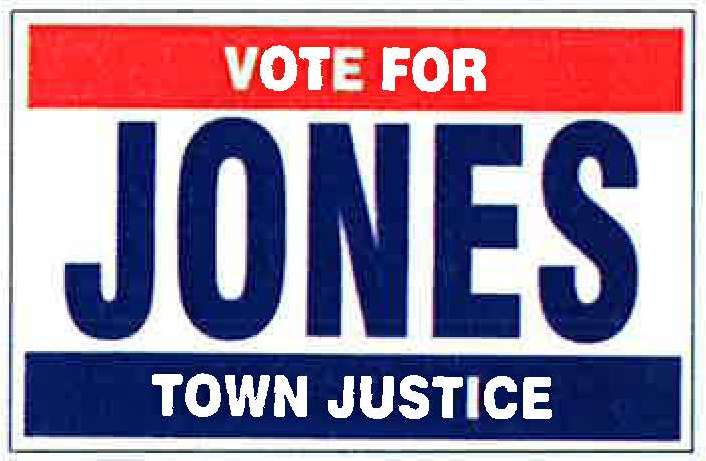
“Property sign” means on-premises signs that state the rights that the owner of that property wishes to enforce such as no dumping, no trespassing or no parking.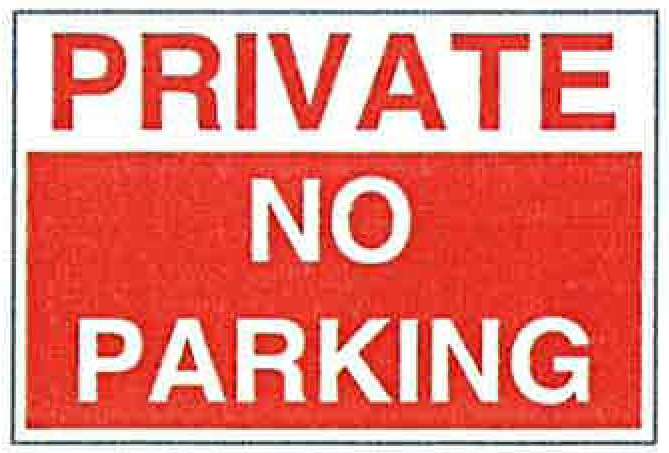
“Real estate sign” means a temporary sign indicating that the lot on which the sign is located, or any building or structure located thereon, is for sale, rent, or lease.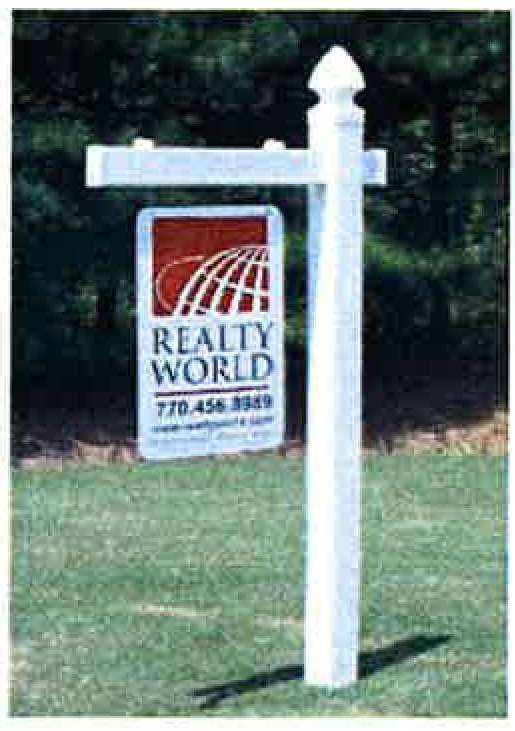
“Replacement,” for the purposes of this chapter, does not include the temporary removal of an existing sign for repair or refurbishment.
“Residential sign” means a freestanding or building sign that displays the address and the name of the occupants of a residence.
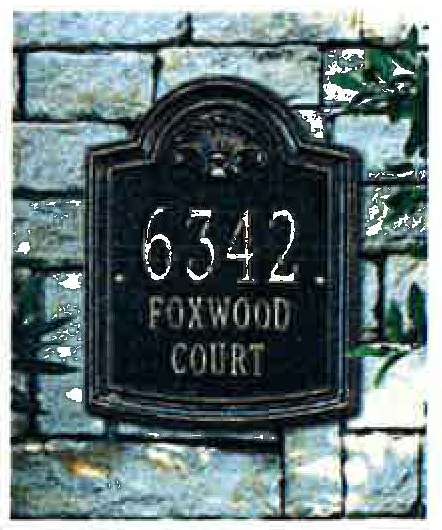
“Sign” means any and all advertising message, announcement, declaration, warning, statement, demonstration, illustration, insignia, words, space, figures or objects erected or maintained in view of any observer for the purpose of designating, identifying, promoting, advertising, directing or warning for the benefit of any person, product, company, entity or service; whether placed on the ground, rocks, trees, stumps, or other natural objects, or on a building, wall, roof, frame, support, fence, or other manmade structure. “Sign” also includes the accessory sign structures, supports, lighting systems and other attachments or components. The word “sign” does not include the flag, pennant or insignia of any nation, state, city or other political unit or any official notice issued by any court, public body or officer, or directional, warning or information sign or structure required or authorized by law.
“Sign area” means the entire area within a single continuous perimeter composed of squares, rectangles or other geometric figures which enclose the extreme limits of all sign elements affixed to the wall, including but not limited to cabinet structures, written copy, logos, symbols, decorative embellishments, border or roof treatments and illustrations.
“Sign copy” means the area on a sign in which letters, logos, and symbols are or can be printed upon.
“Sign face” means the part of a sign that is or may be used for advertising purposes.
“Snipe/bootleg sign” means a small sign of any material including but not limited to paper, cardboard, wood or metal when such sign is tacked, nailed, posted, pasted, glued or otherwise attached to trees, poles, fences or other objects, and the advertising matter appearing thereon is not applicable to the premises upon which said sign is located.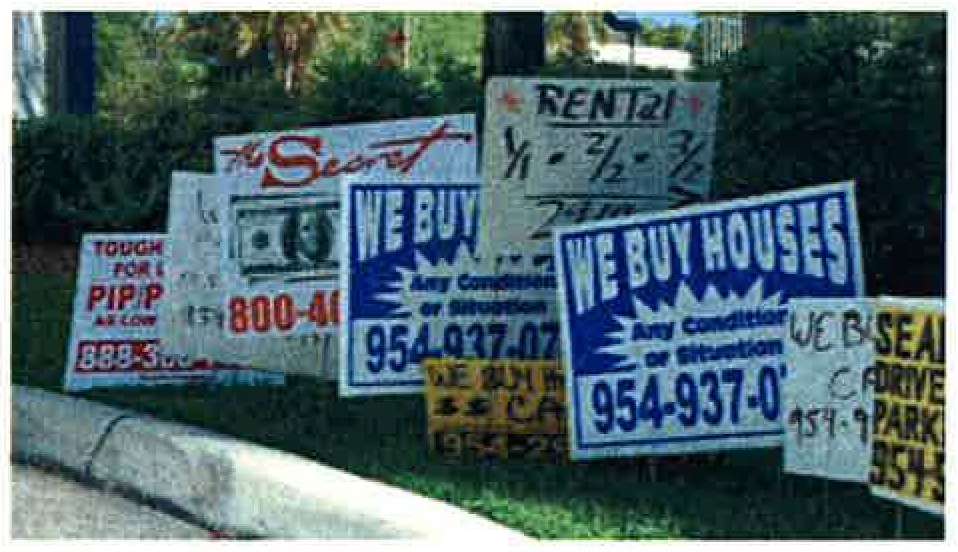
“Special events sign” means a sign which calls attention to a business promotion or grand opening.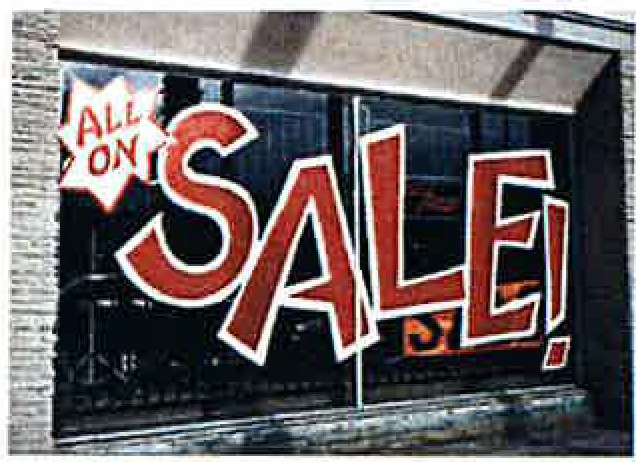
“Suspended signs” are attached to the ceiling of an arcade or the framework of a canopy and hang over a sidewalk.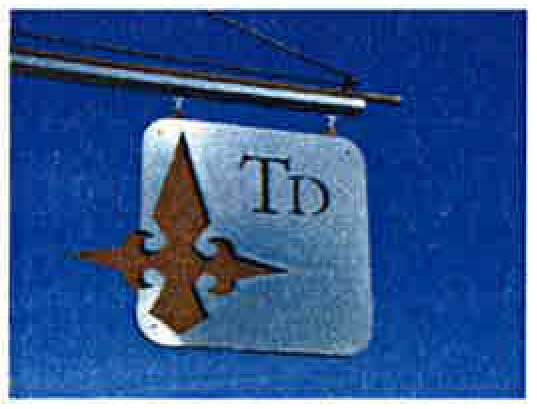
“Temporary sign” means any permitted type of sign, but displayed for 60 days or less, except in the case of construction and real estate signs, which are temporary, but may be displayed until construction is complete or the property advertised has been rented or sold or otherwise allowed by this chapter.
“Traffic control sign” means standard regulatory signs installed by public agencies, including stop and yield signs, speed limit signs, etc., and permitted wherever warranted. When installed on private premises, such signs are directional.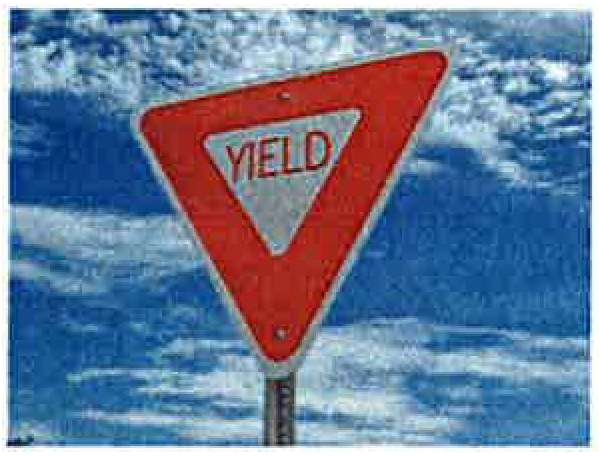
“Vehicular sign” means a sign affixed to a vehicle or trailer for the purpose of advertising. Such sign shall only be applicable or regulated by this chapter when said vehicle or trailer is parked on a parcel other than the owner’s property for the primary purpose of conveying a business message.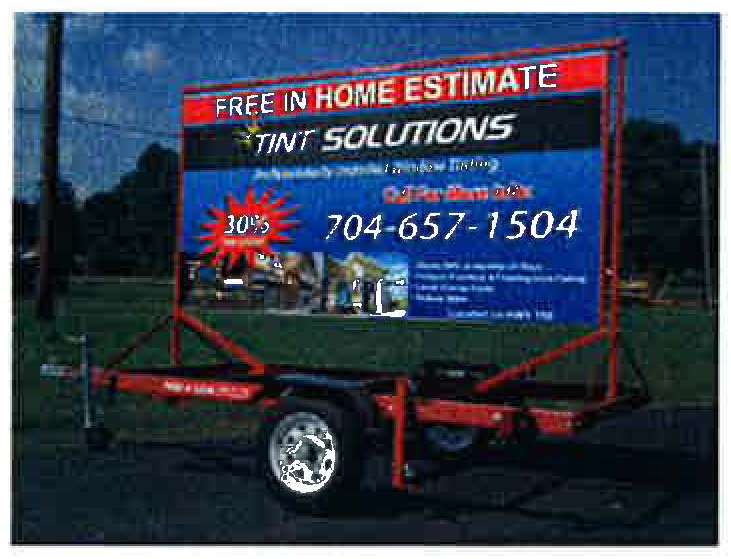
“Wall face,” for the purpose of this chapter, means the visible outer surface area of a main exterior wall of a building. The area of the wall face shall be the total area of such surface including the area of doors and windows that are included in the main exterior wall.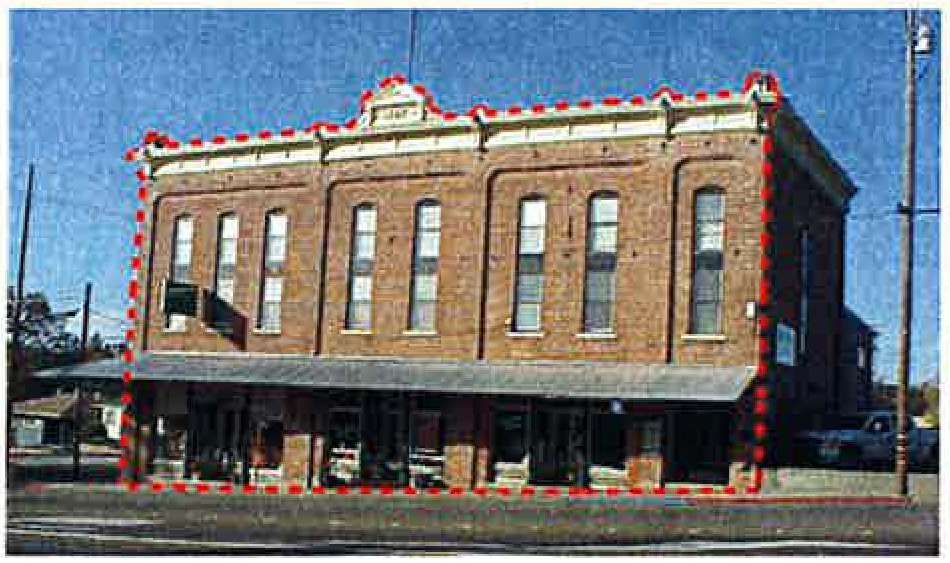
“Wall sign” means a building sign painted directly on the wall of a building or attached to the wall of a building, and parallel with the wall to which it is attached. Wall signs extend no more than one foot from the building to which they are attached and do not extend above the roofline of the building to which they are attached
.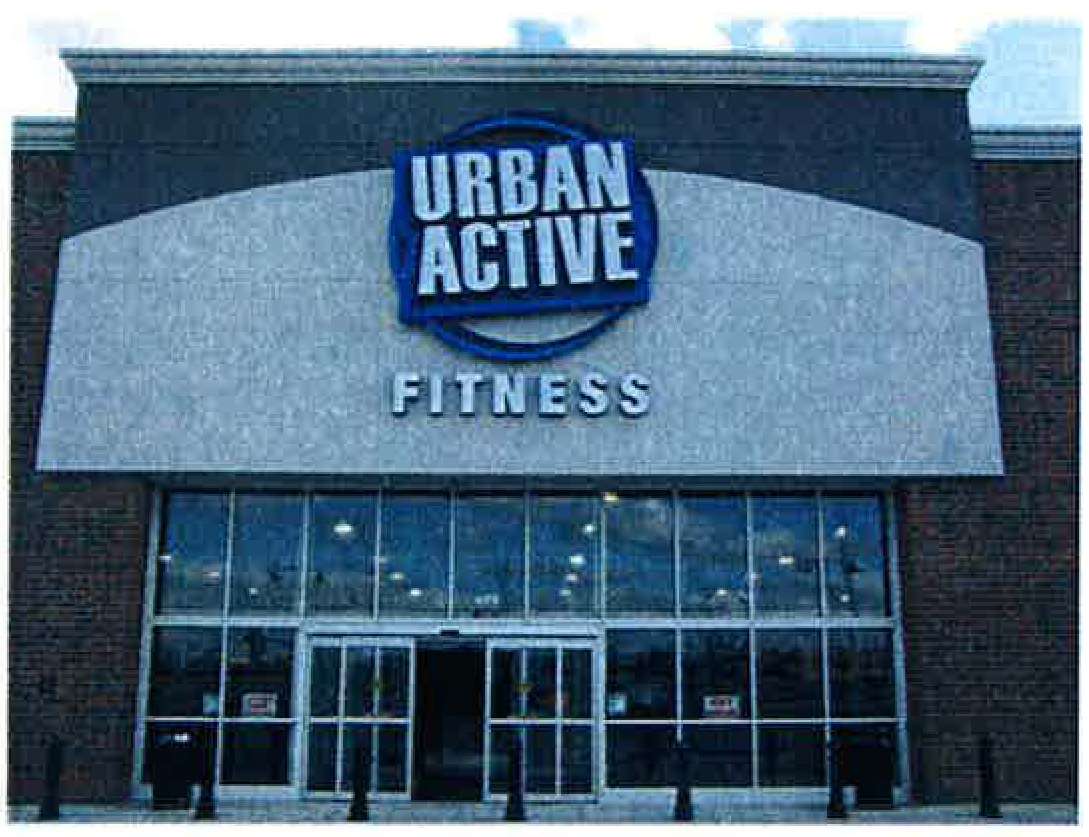
“Window sign” means signs, including posters, messages, or displays painted or mounted on the interior side of a window for special promotional or other temporary displays.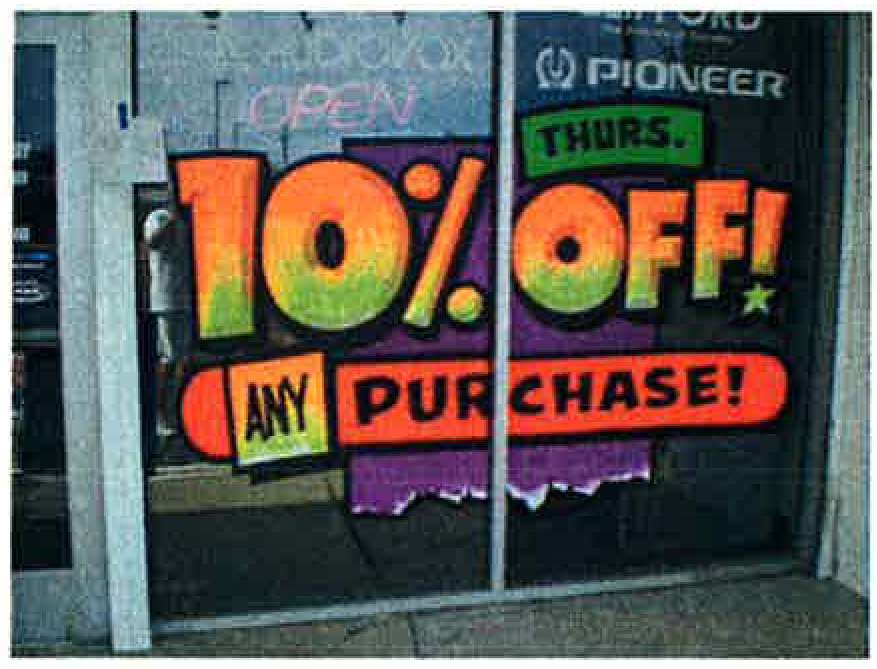
[Ord. O-03-2020 § 2 (Exh. A); Ord. O-08-2016 § 2 (Exh. A); Ord. O-06-2010 § 2 (Exh. A); Ord. O-12-2009 § 2 (Exh. A); Ord. O-26-2008 § 2 (Exh. A § 16.14); Ord. O-18-2008 § 2 (Exh. A § 16.14); Ord. O-17-2006 § 2 (Exh. 1 § 16.14); Ord. O-23-2005 § 3 (Exh. 1(1) § 16.13). Formerly 17.80.150].
17.80.170 Schematics.
Schematic 17.80.170(a) – Model Home Signage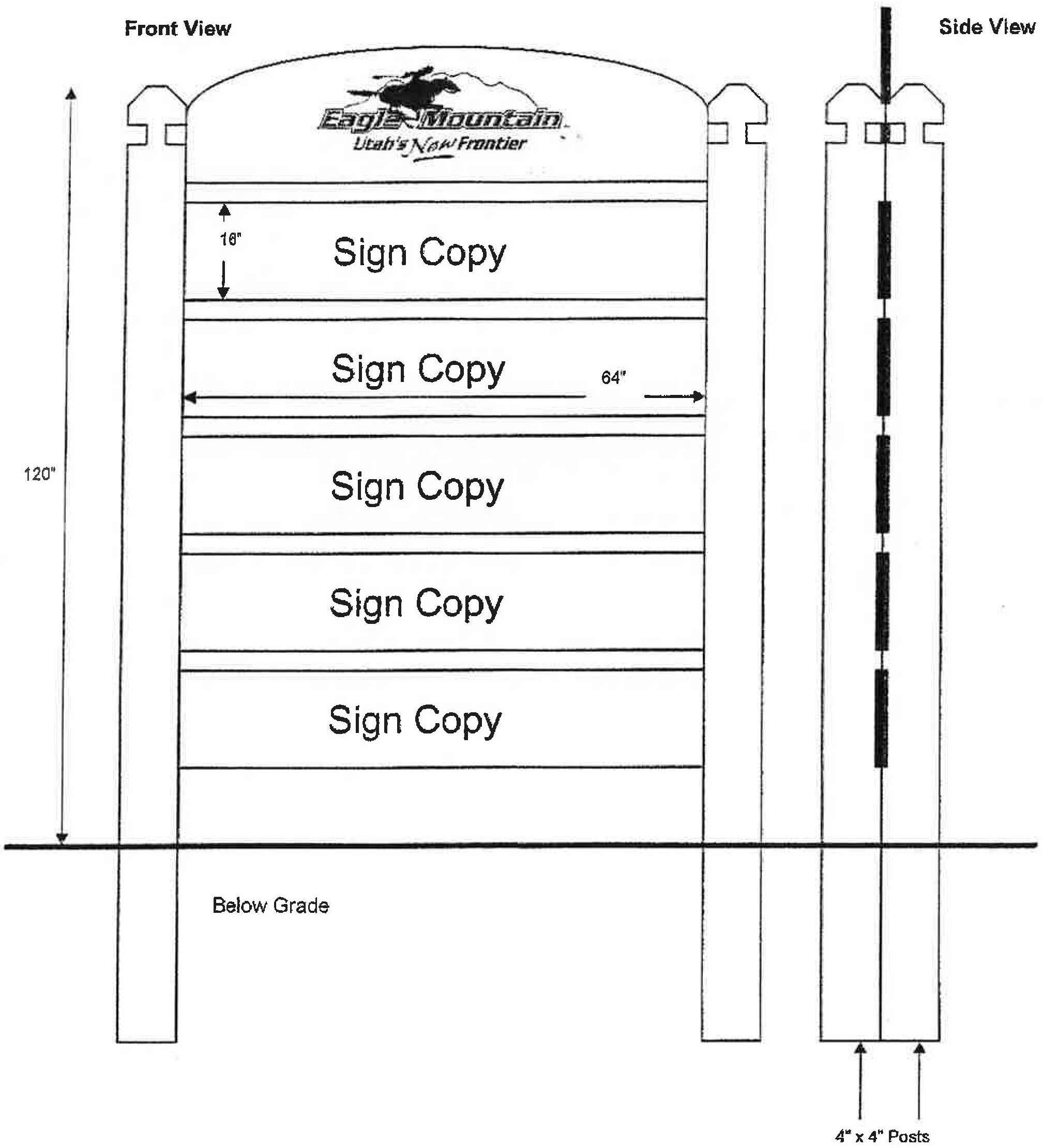
Signs shall be painted Monterrey Grey.
Schematic 17.80.170(b) – Directional Median Signage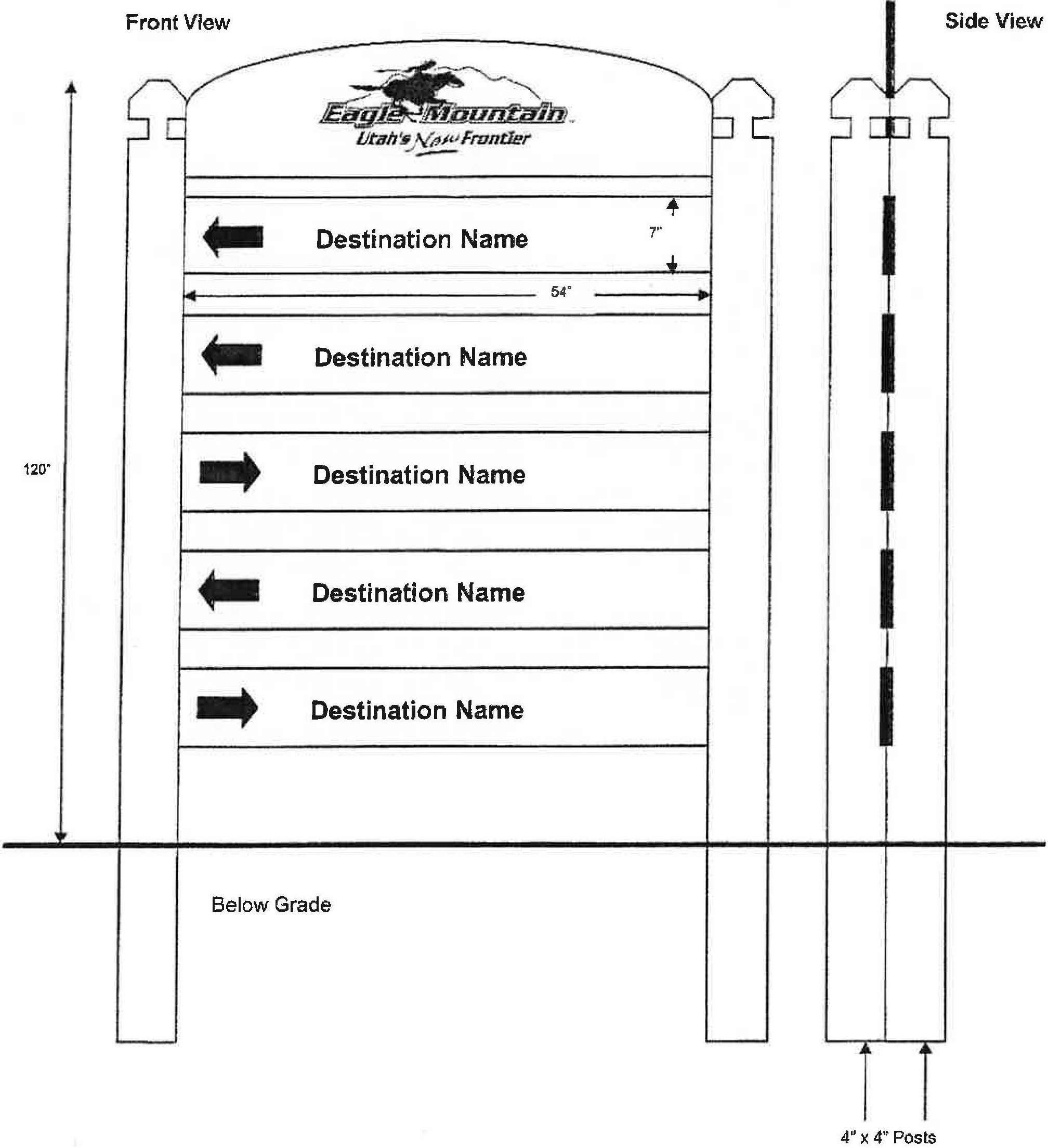
Signs shall be painted Monterrey Grey.
Schematic 17.80.170(c) – Directional/Advertising Business Signage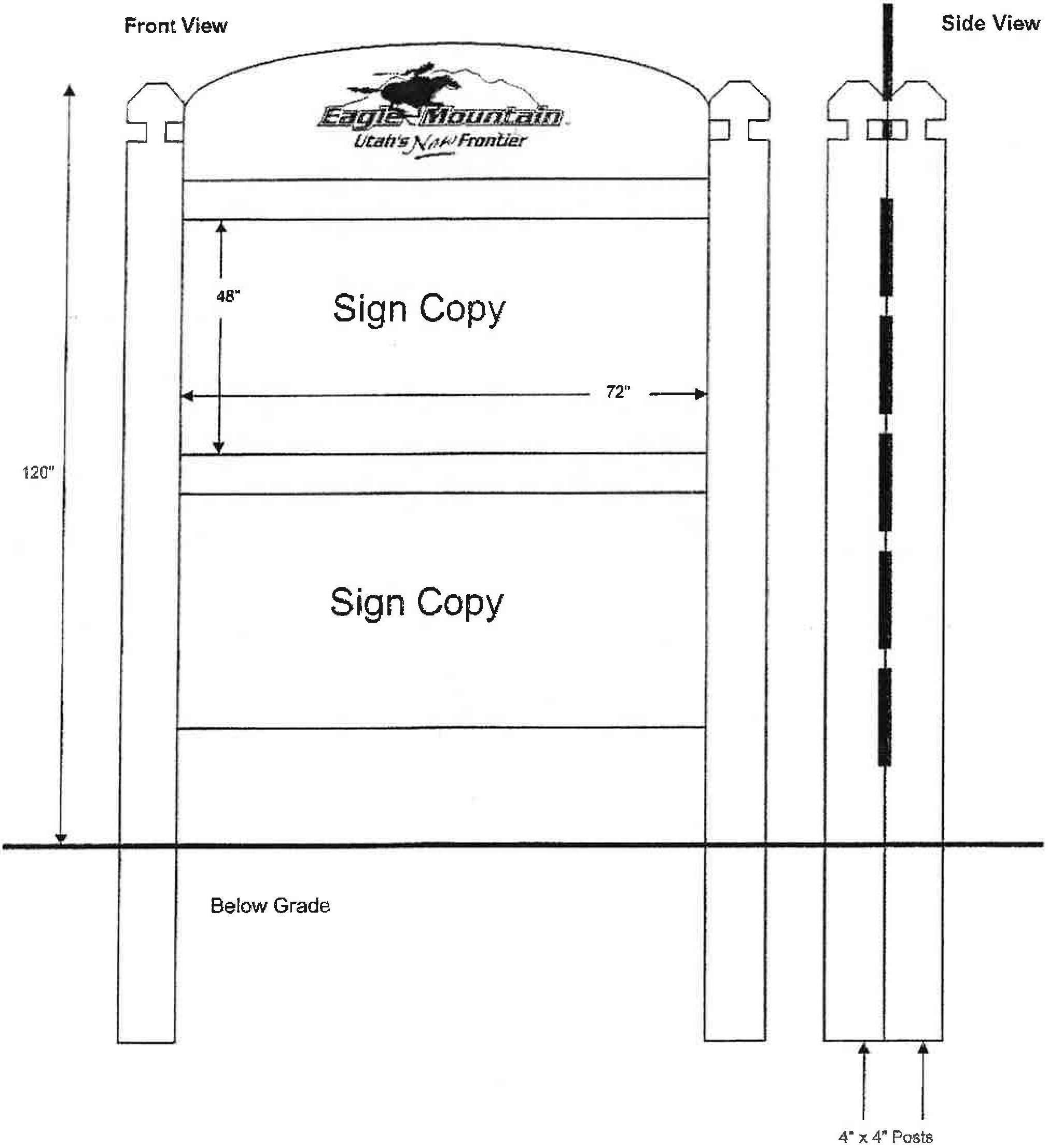
Signs shall be painted Monterrey Grey.
[Ord. O-08-2016 § 2 (Exh. A); Ord. O-06-2010 § 2 (Exh. A); Ord. O-12-2009 § 2 (Exh. A); Ord. O-23-2005 § 3 (Exh. 1(1) Schematics 15.1 – 15.3). Formerly 17.80.160.].


